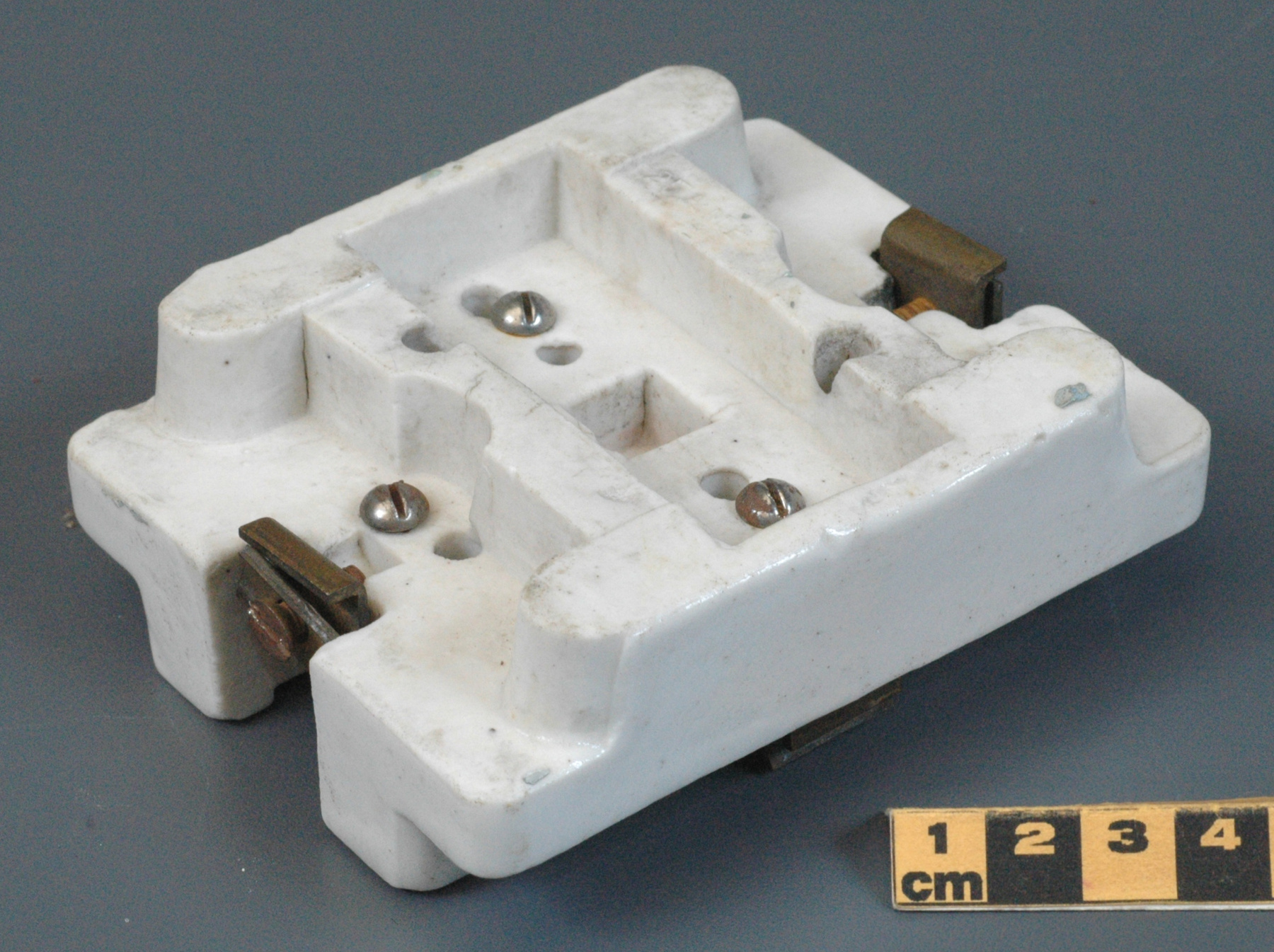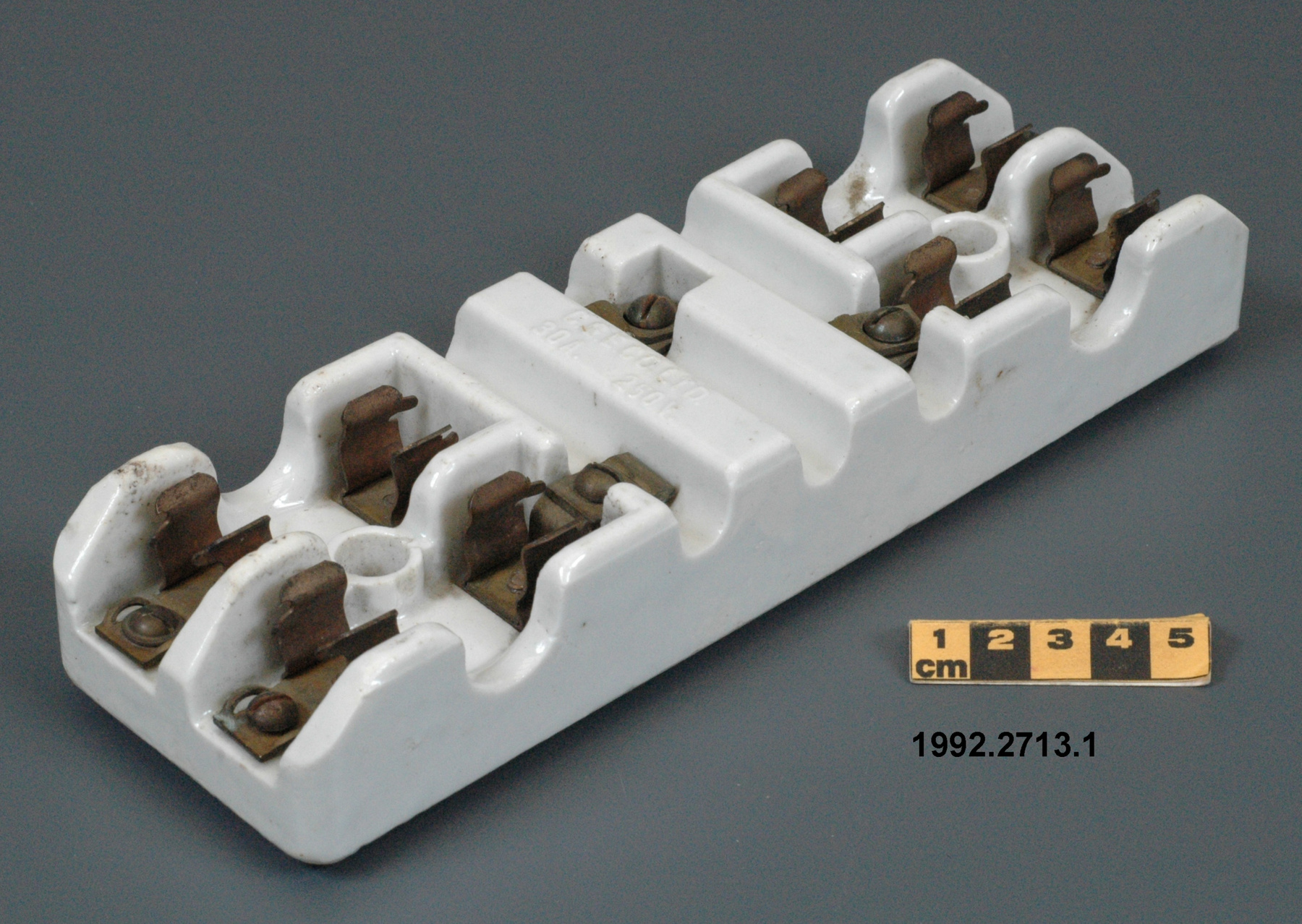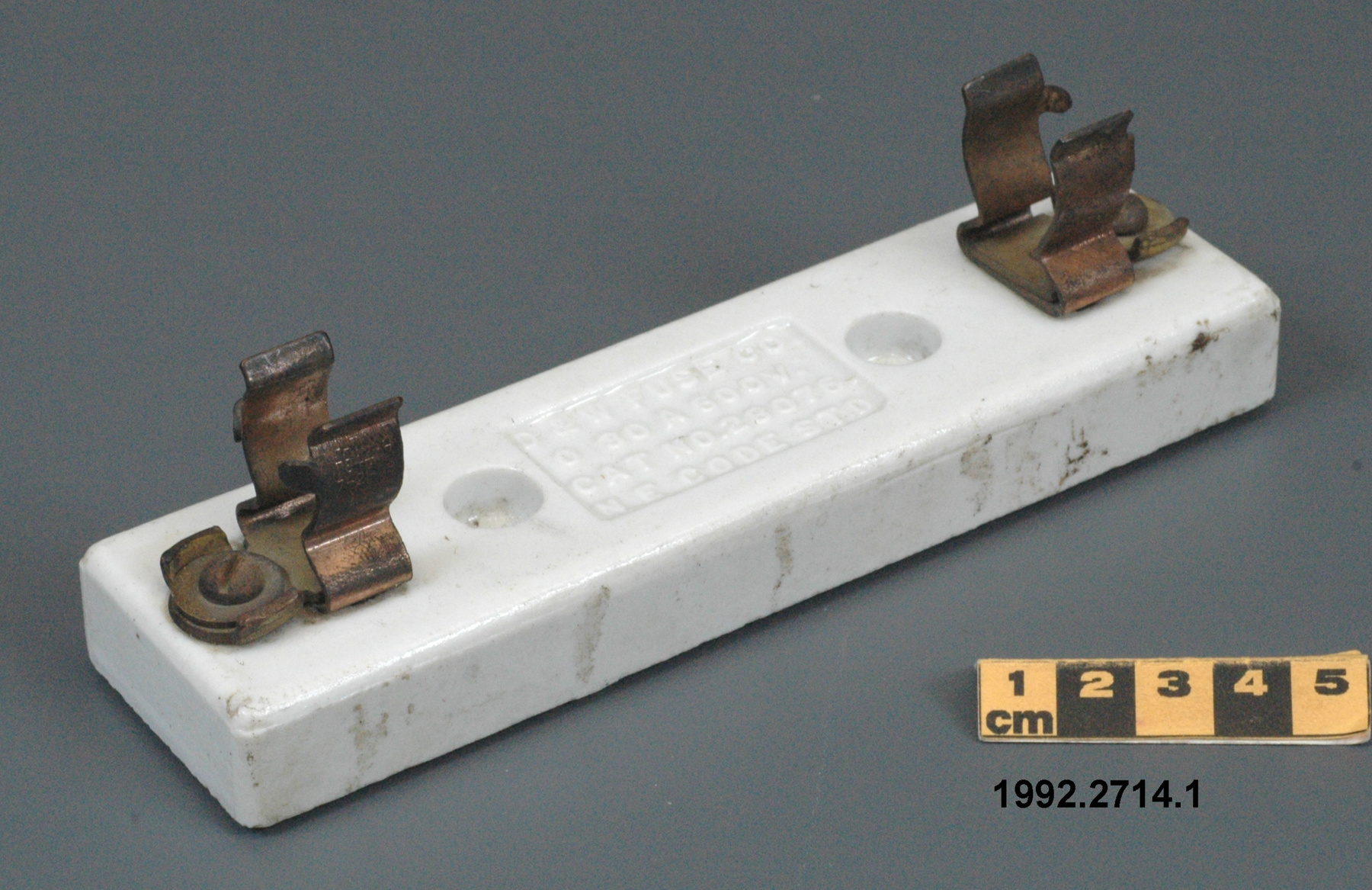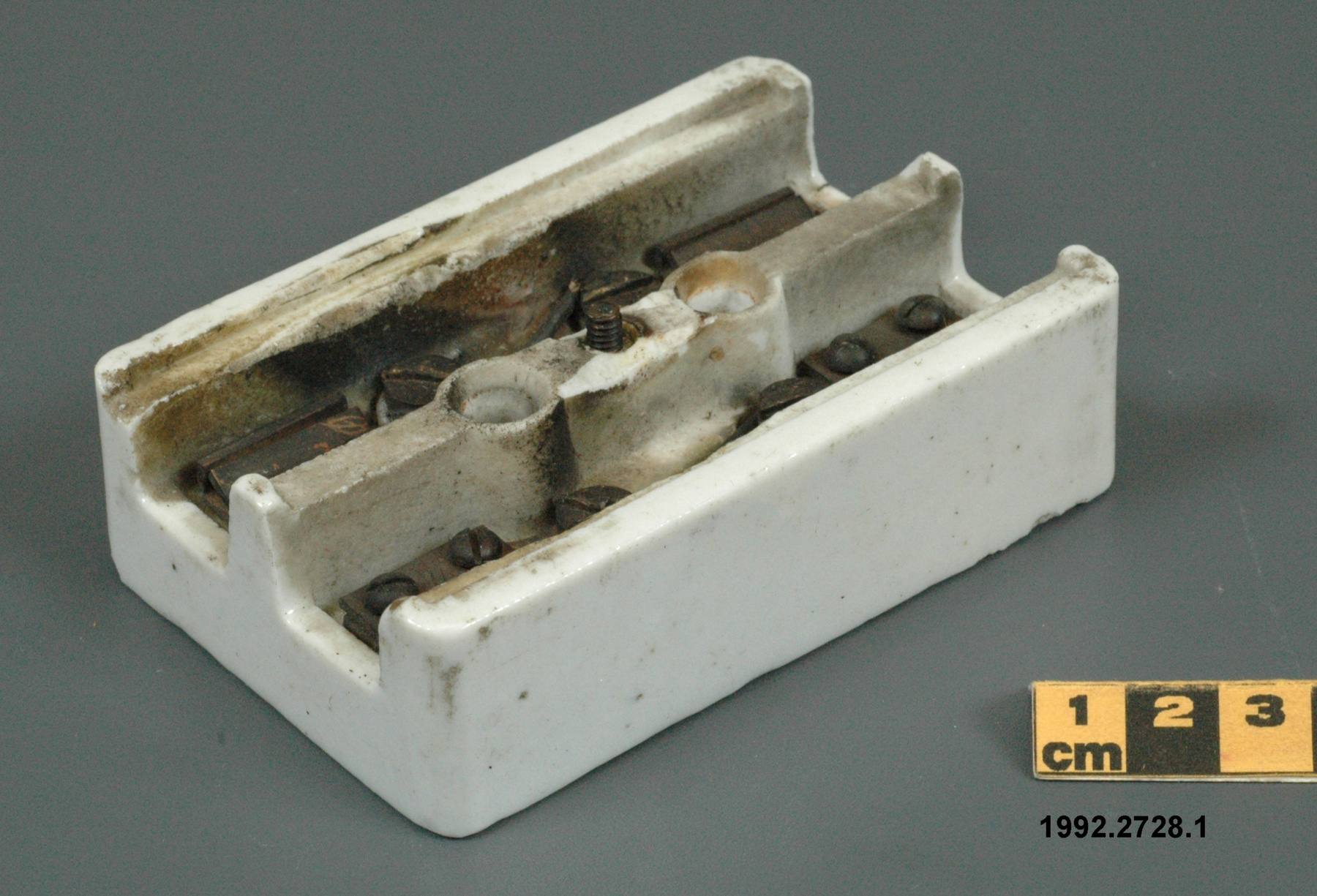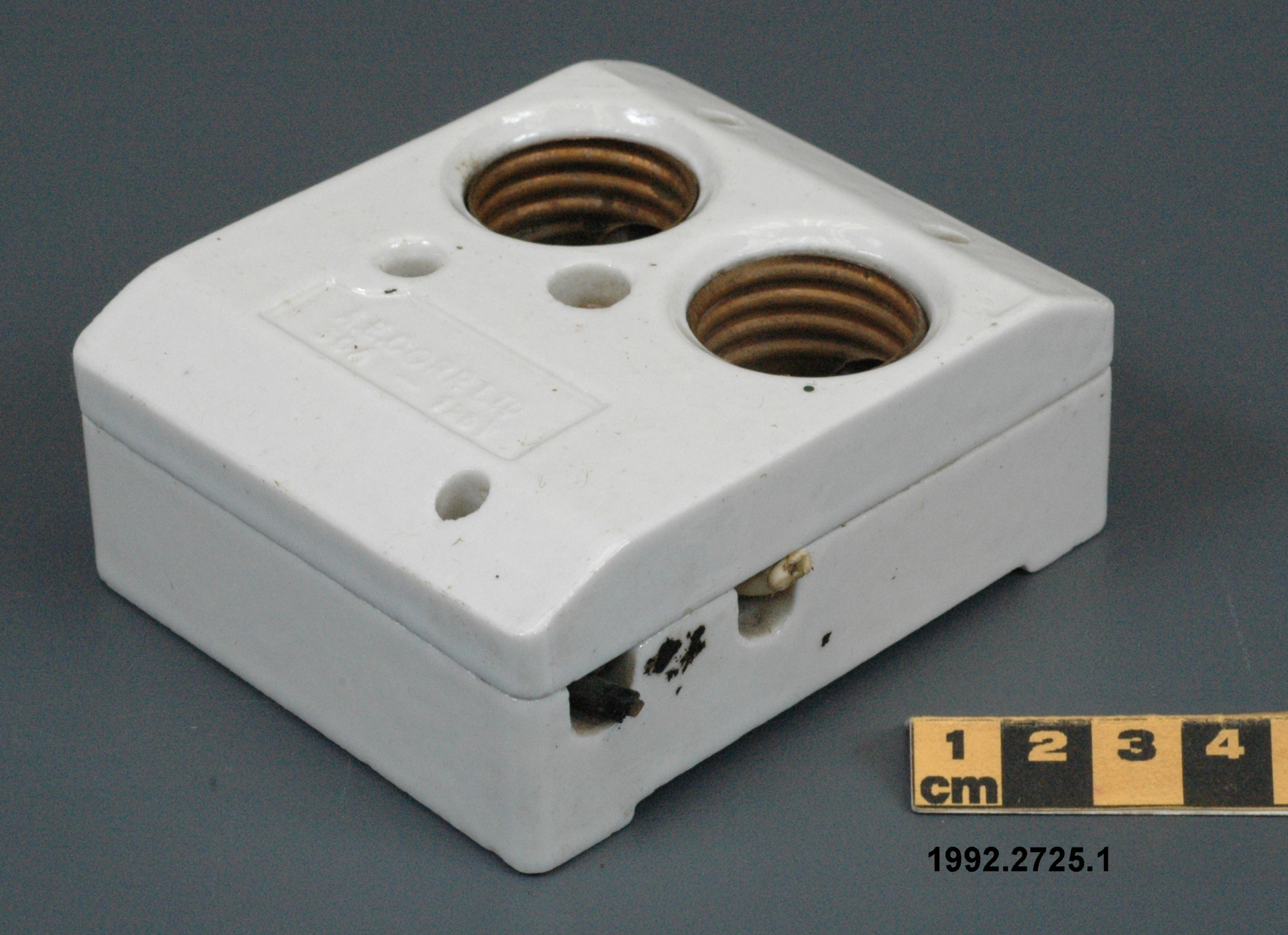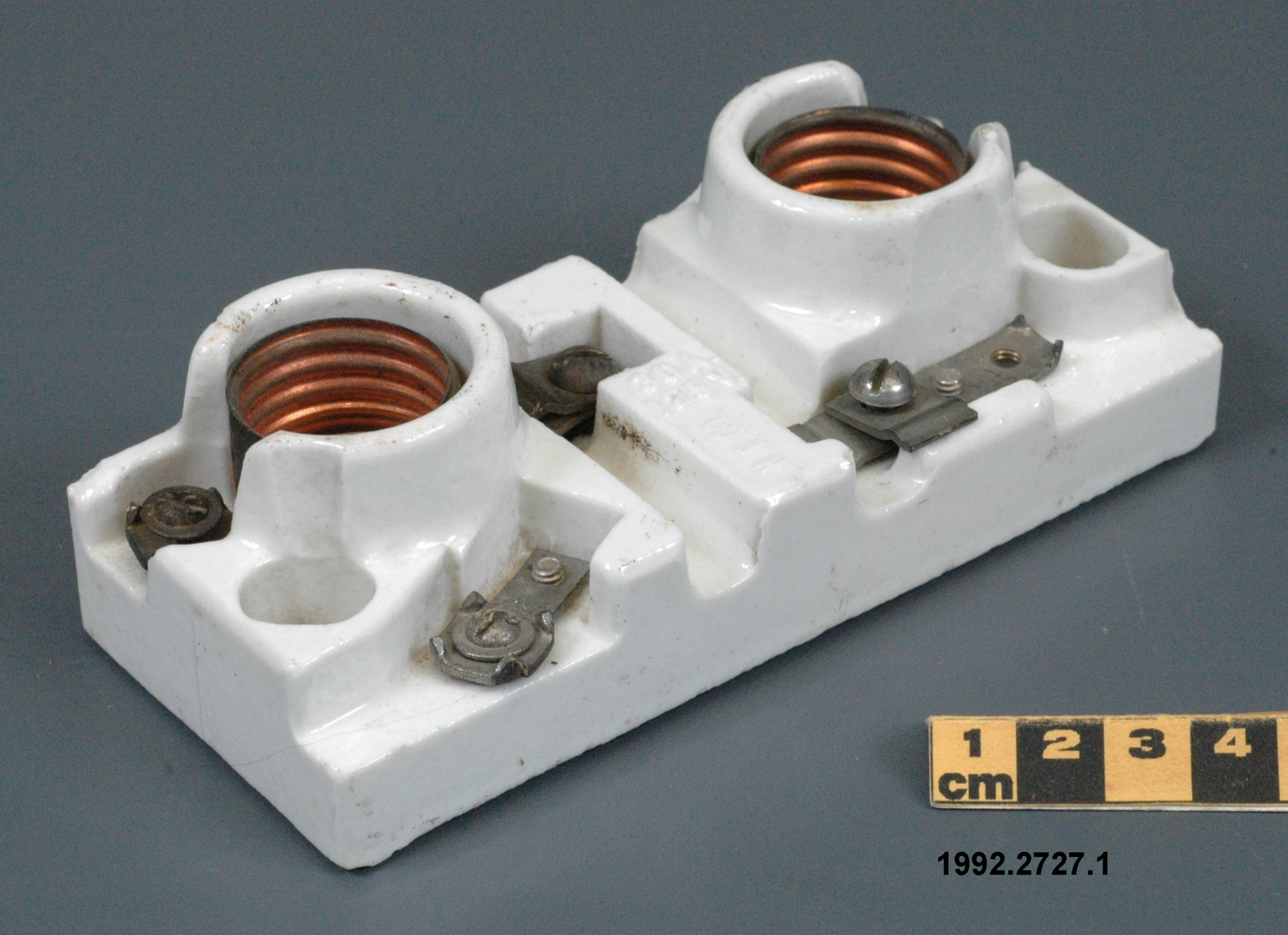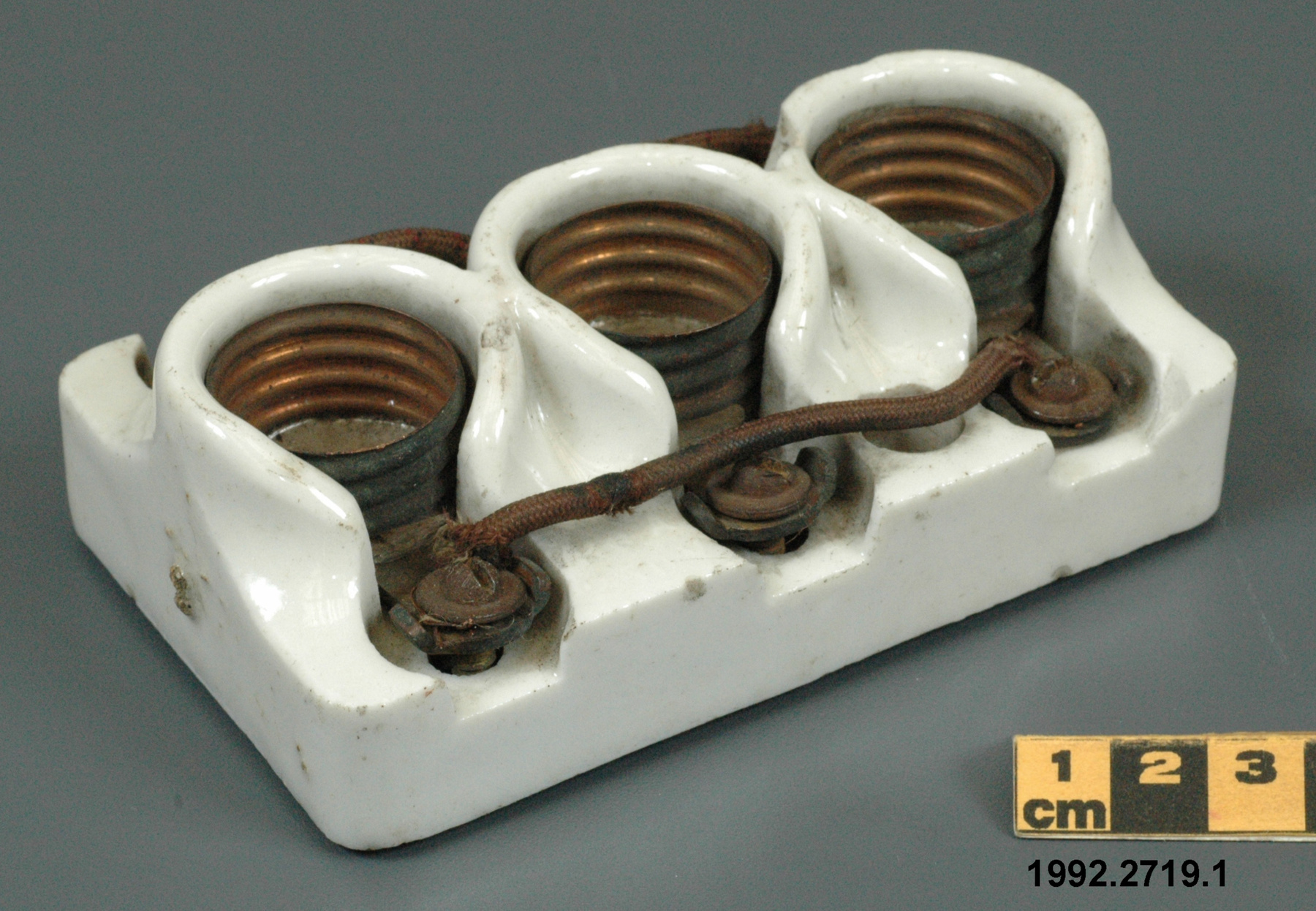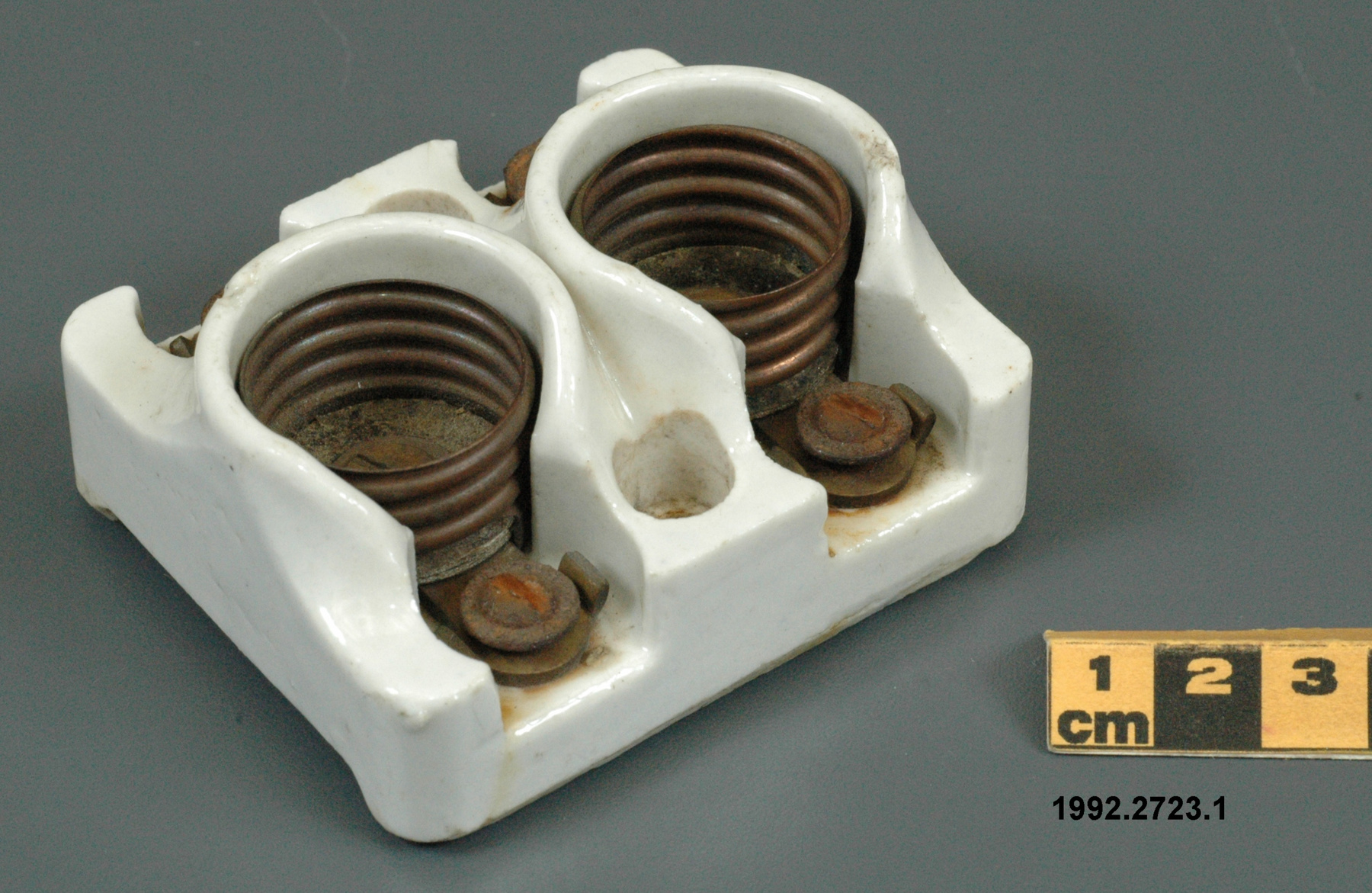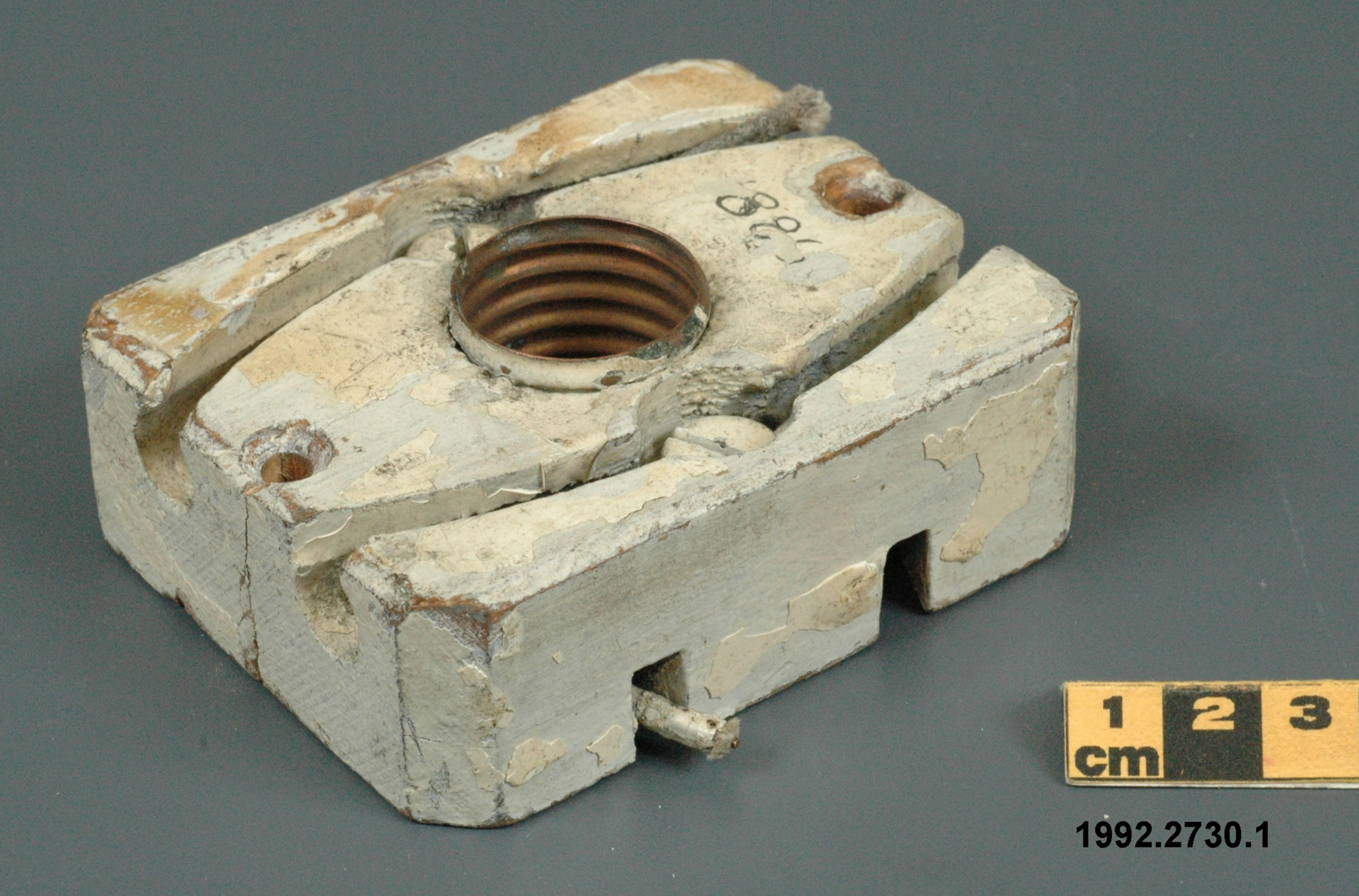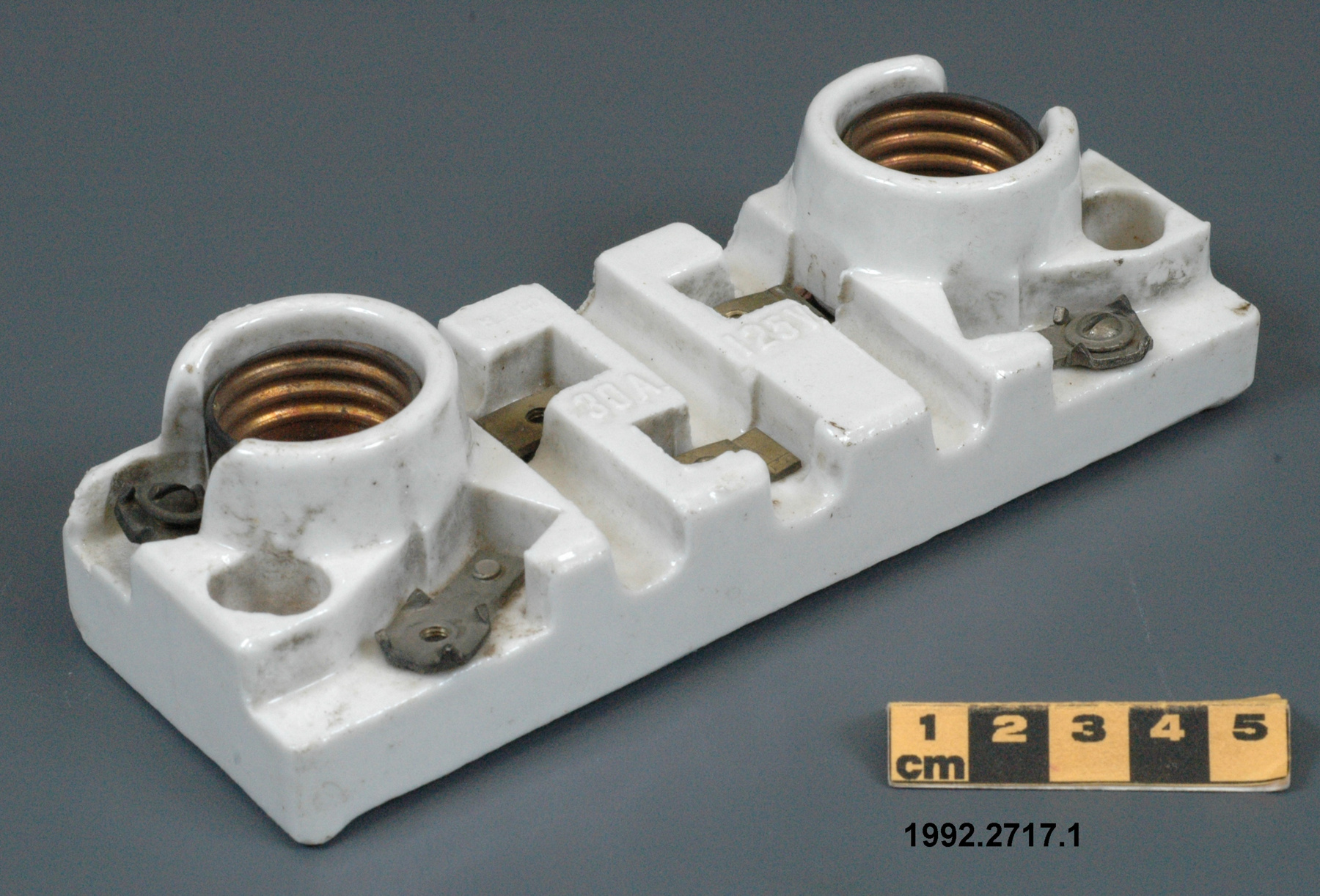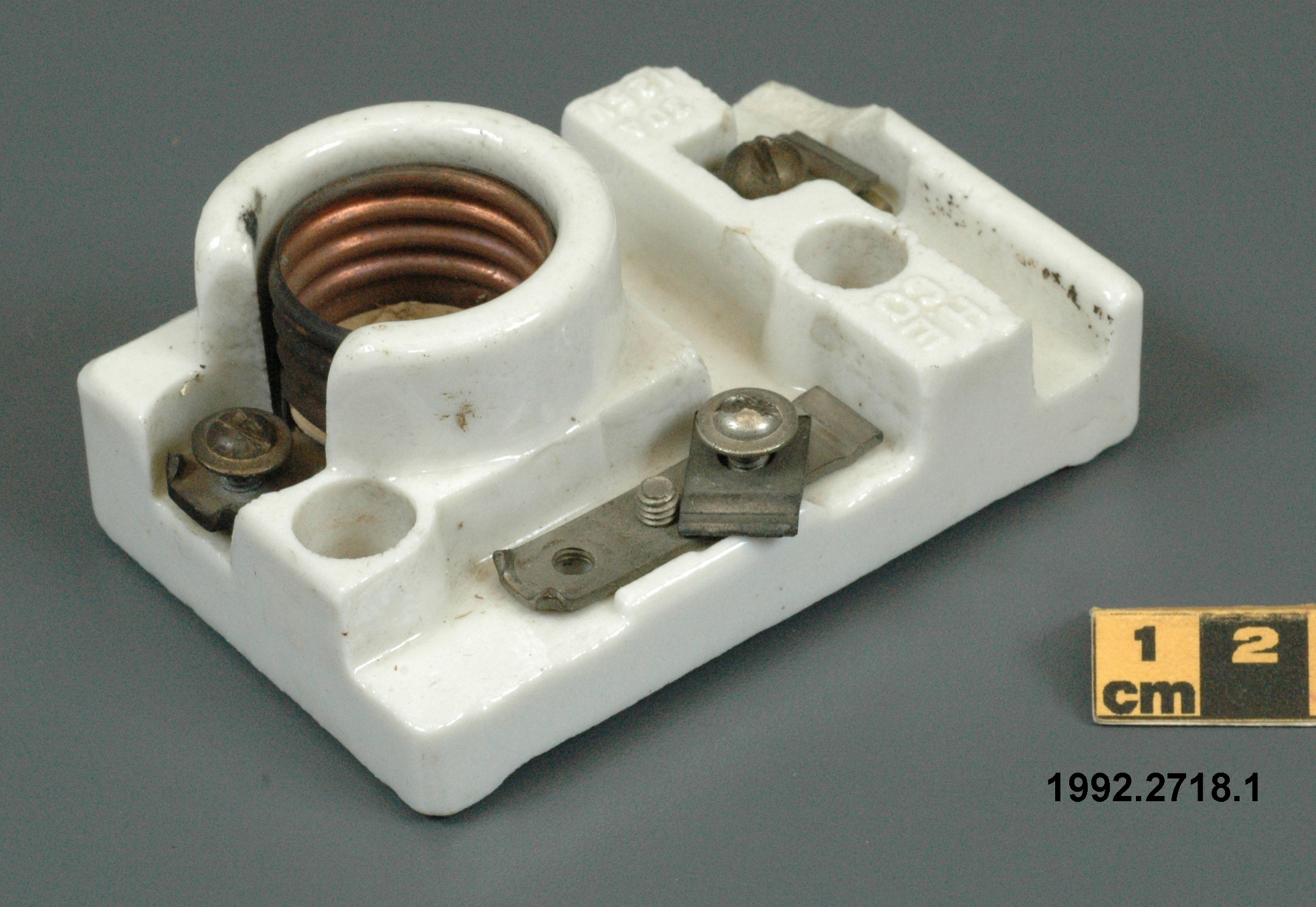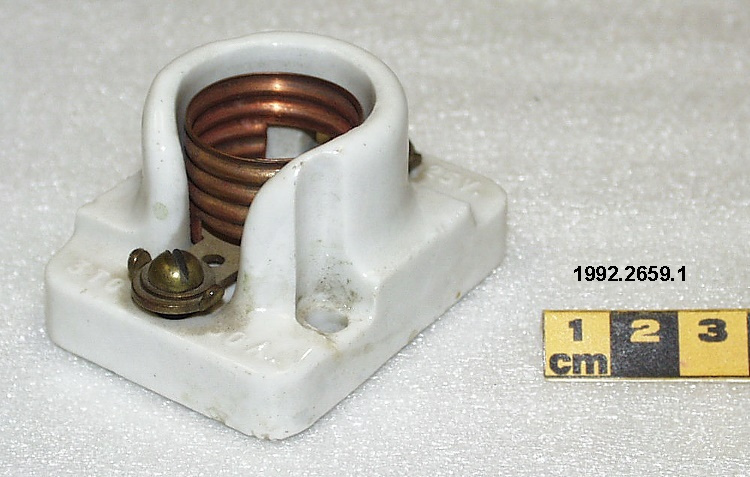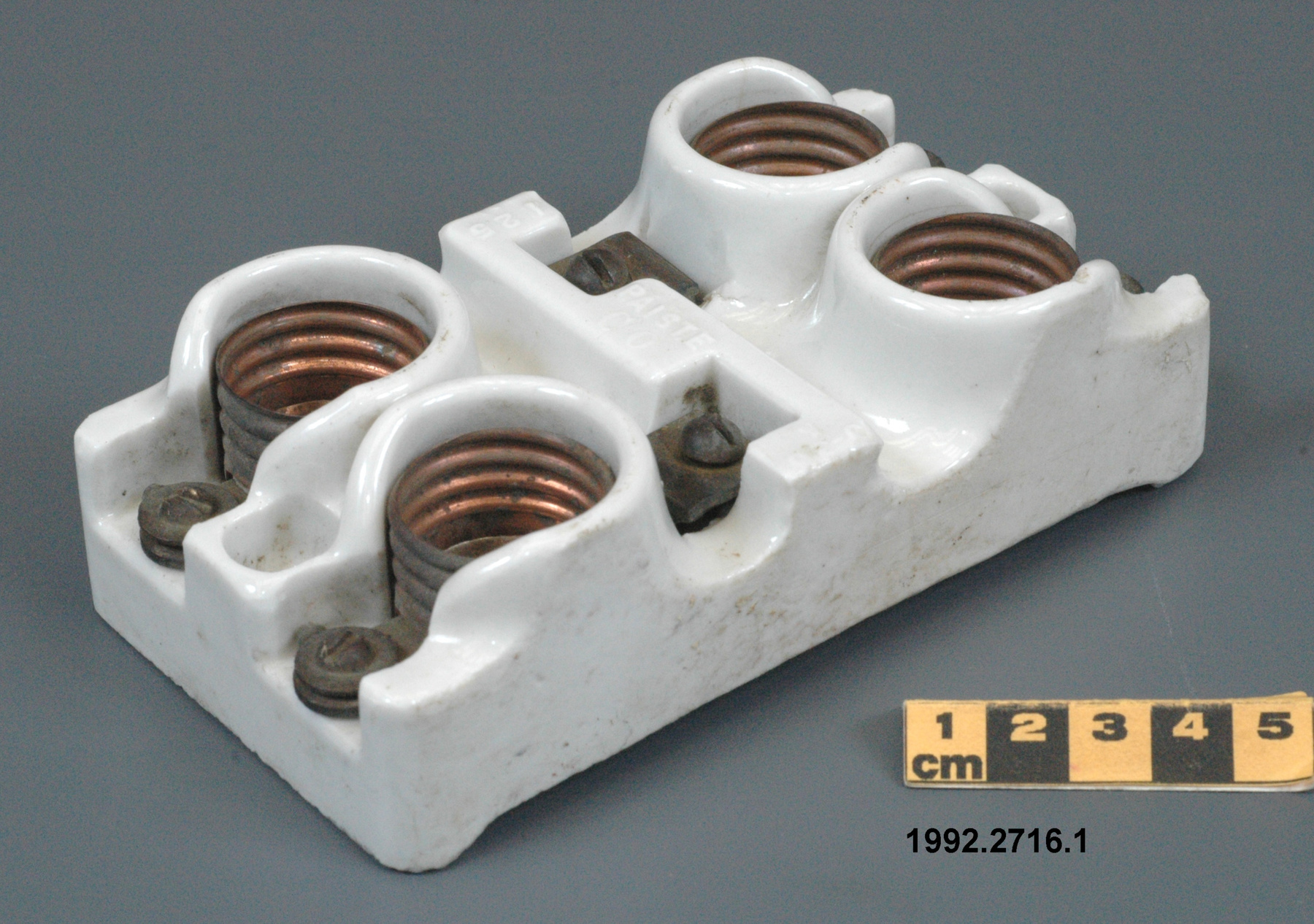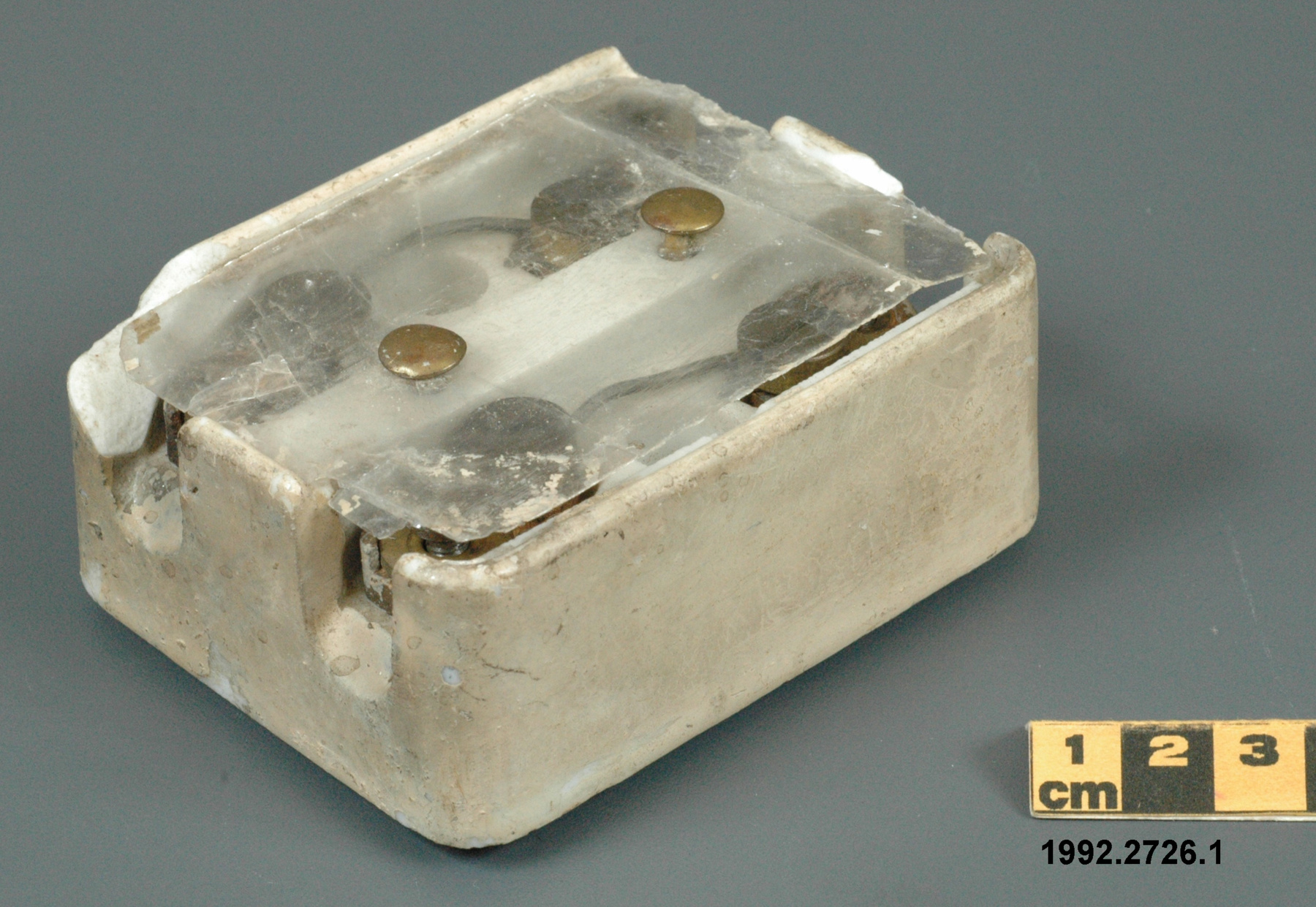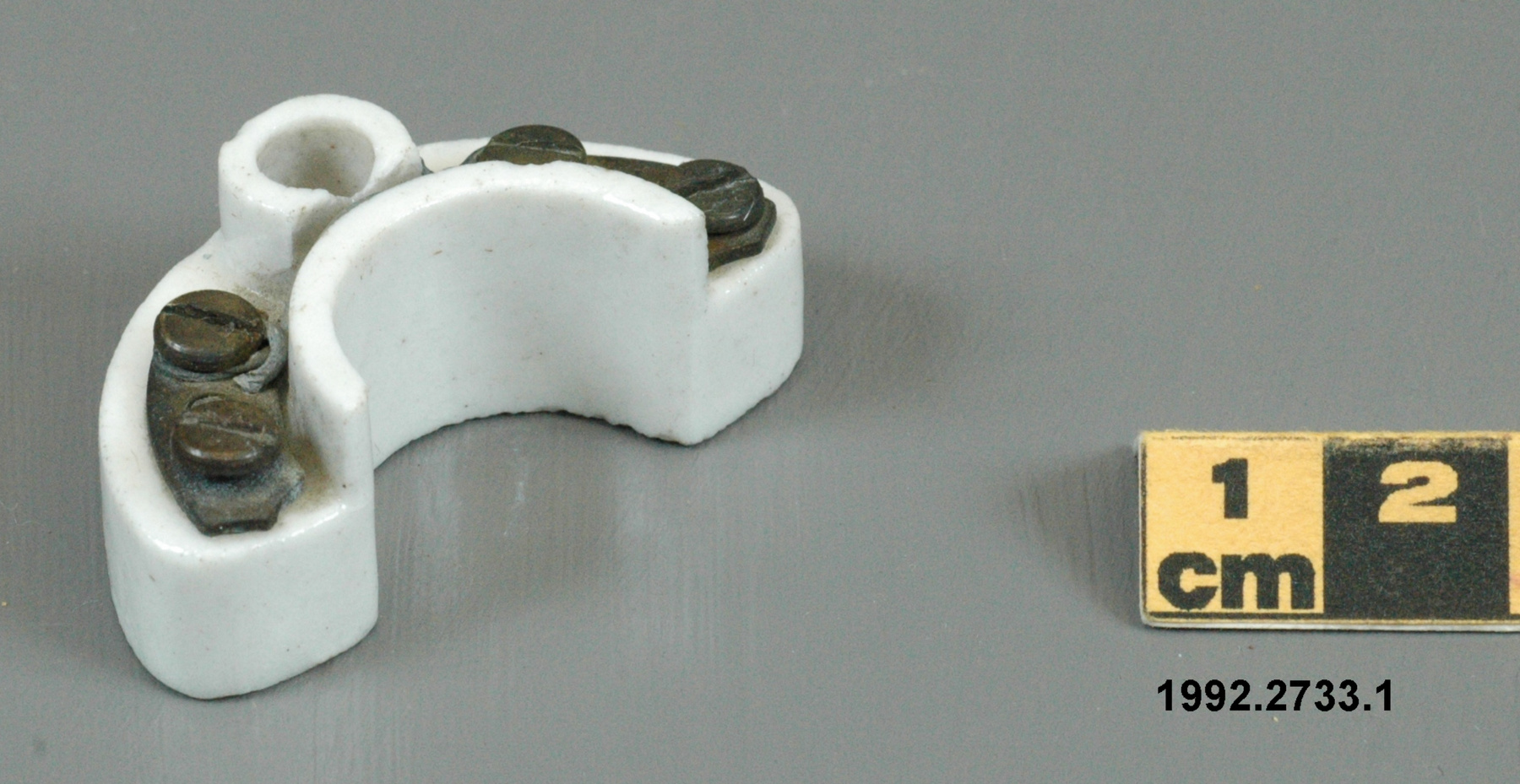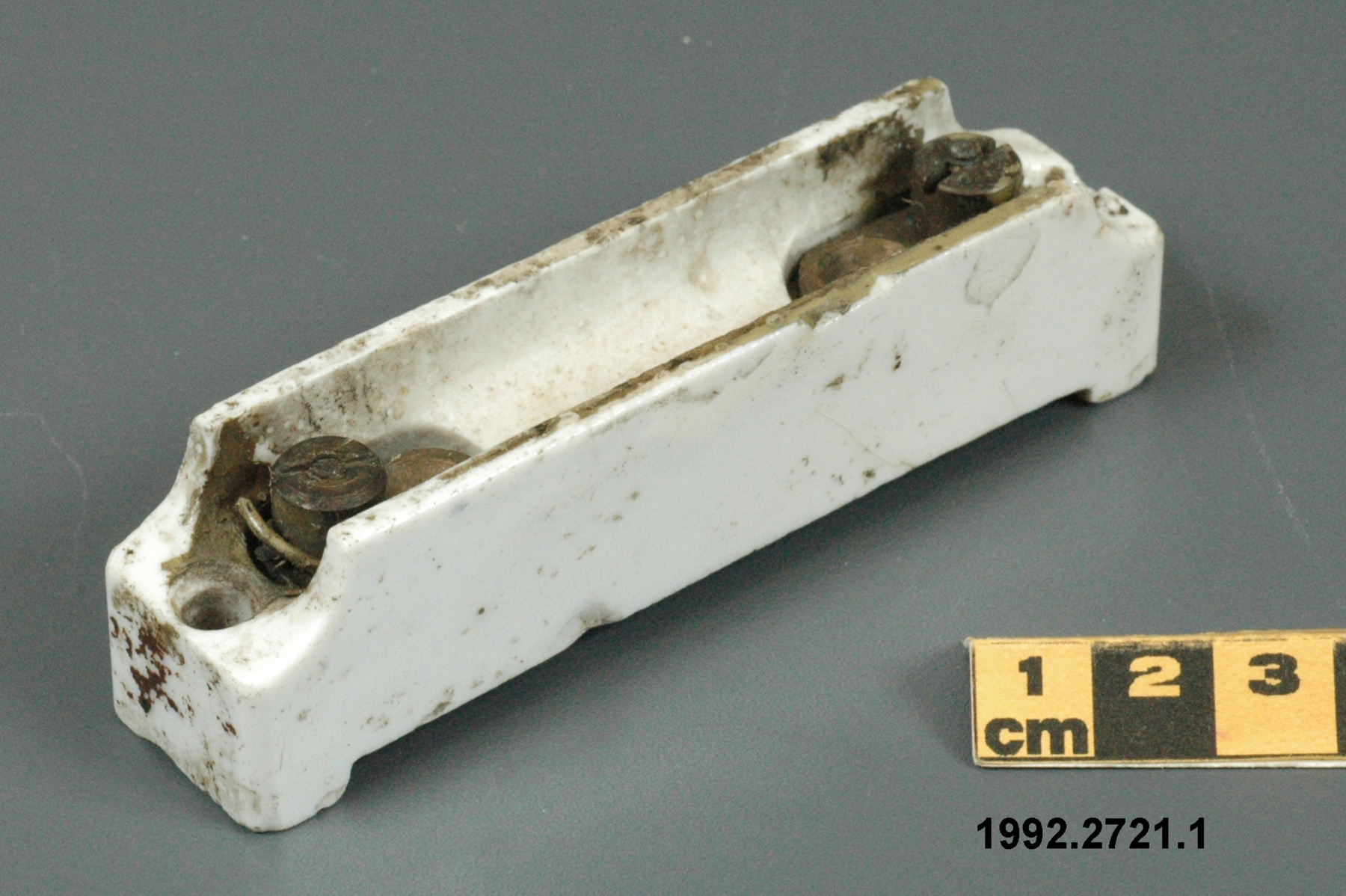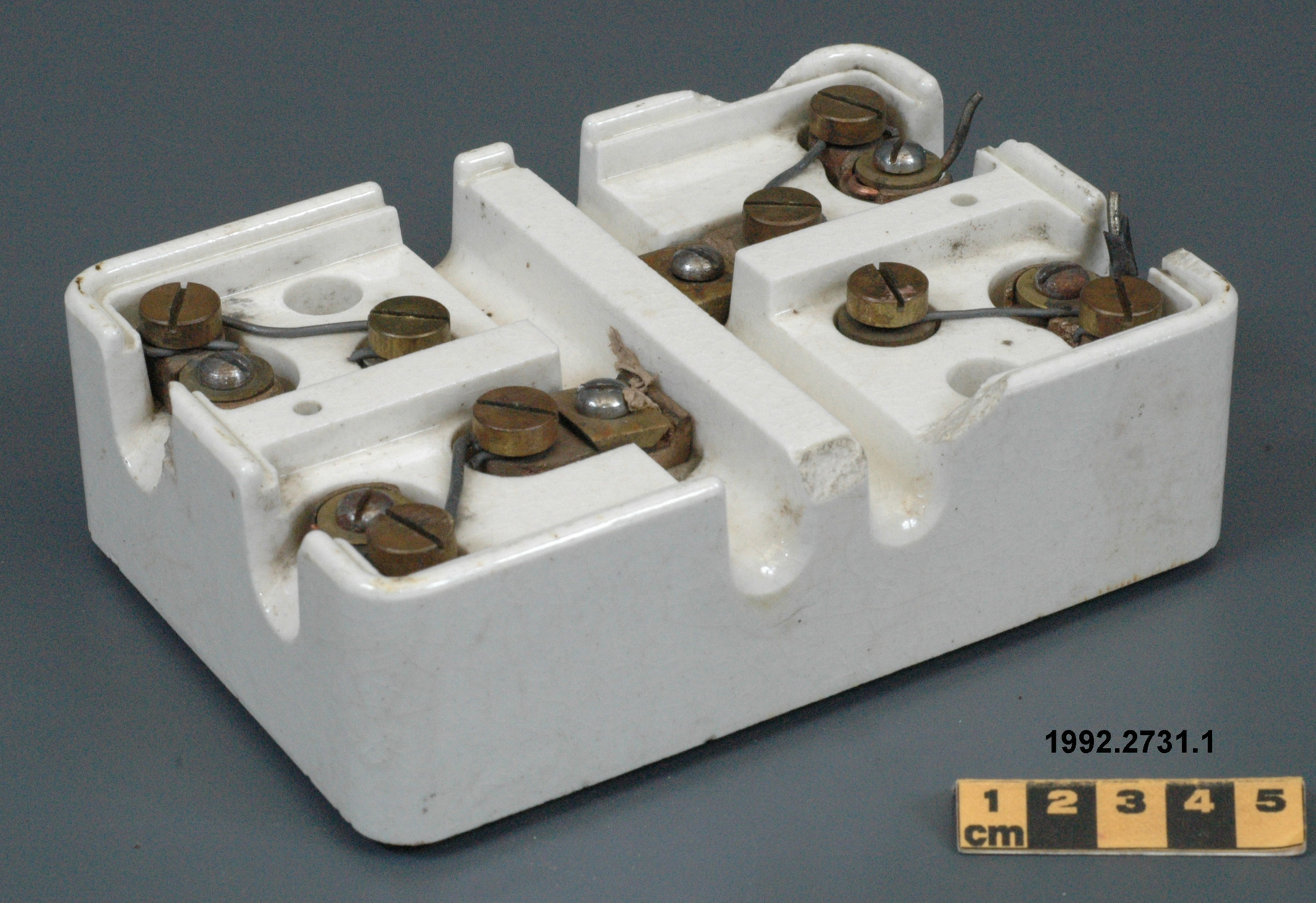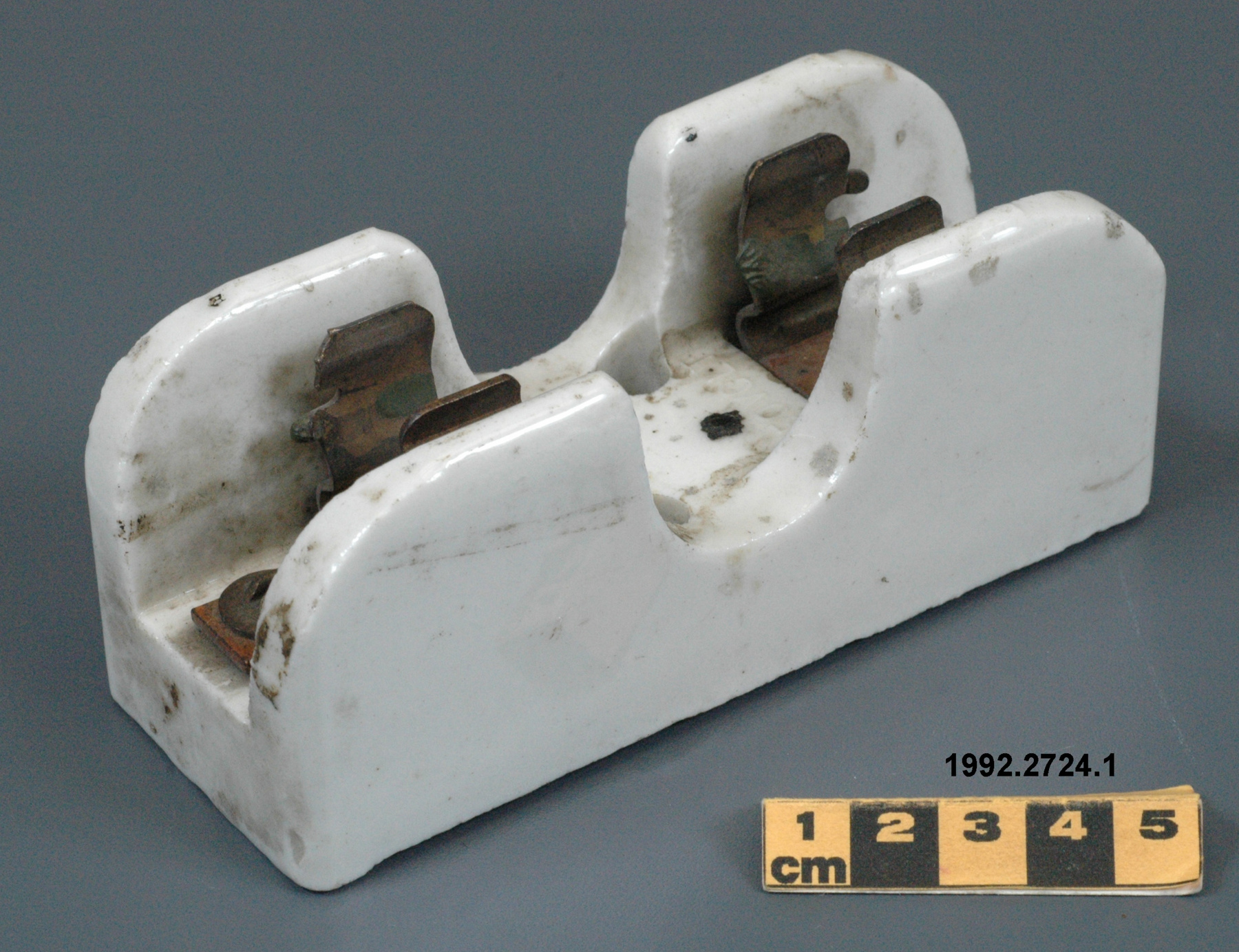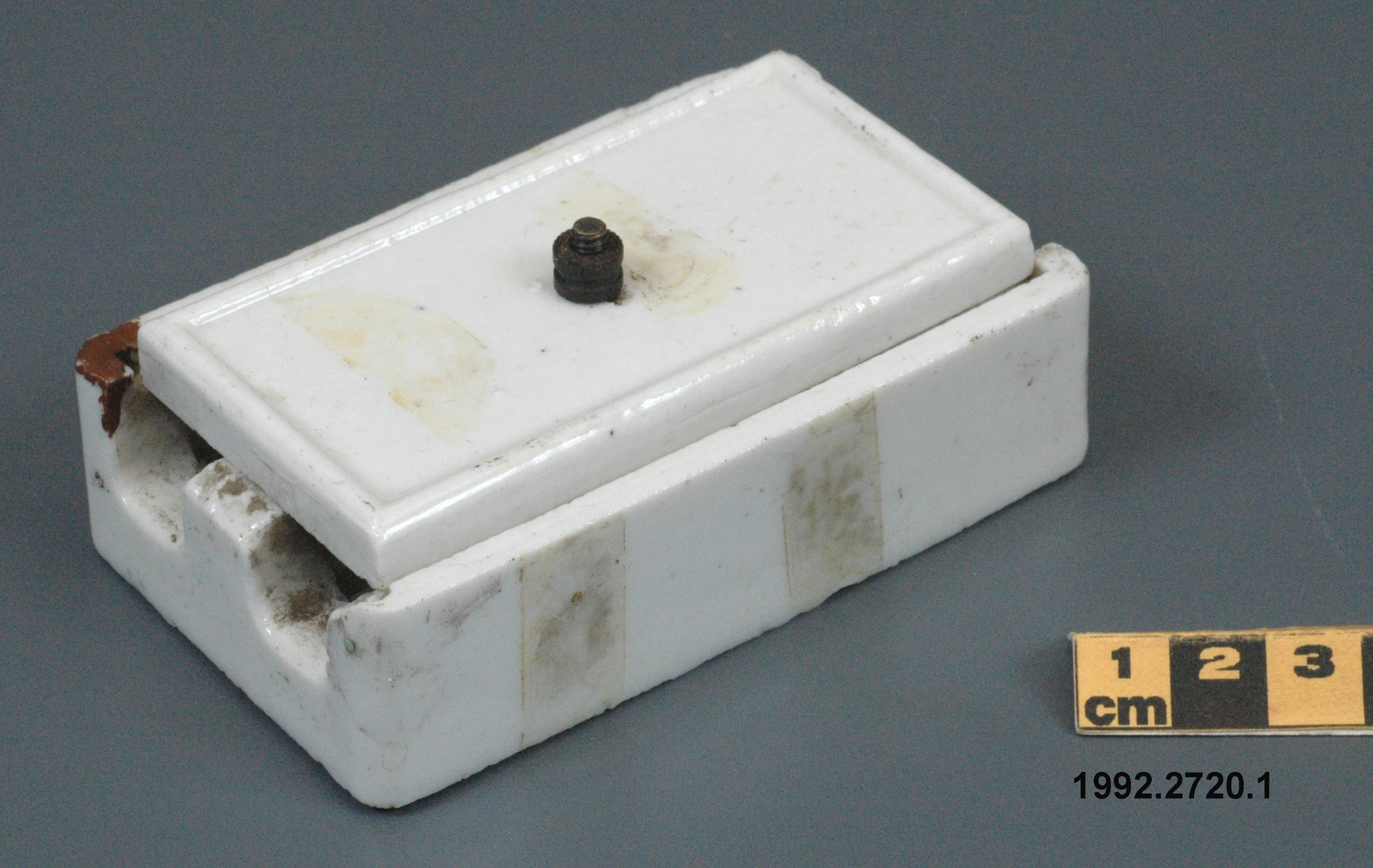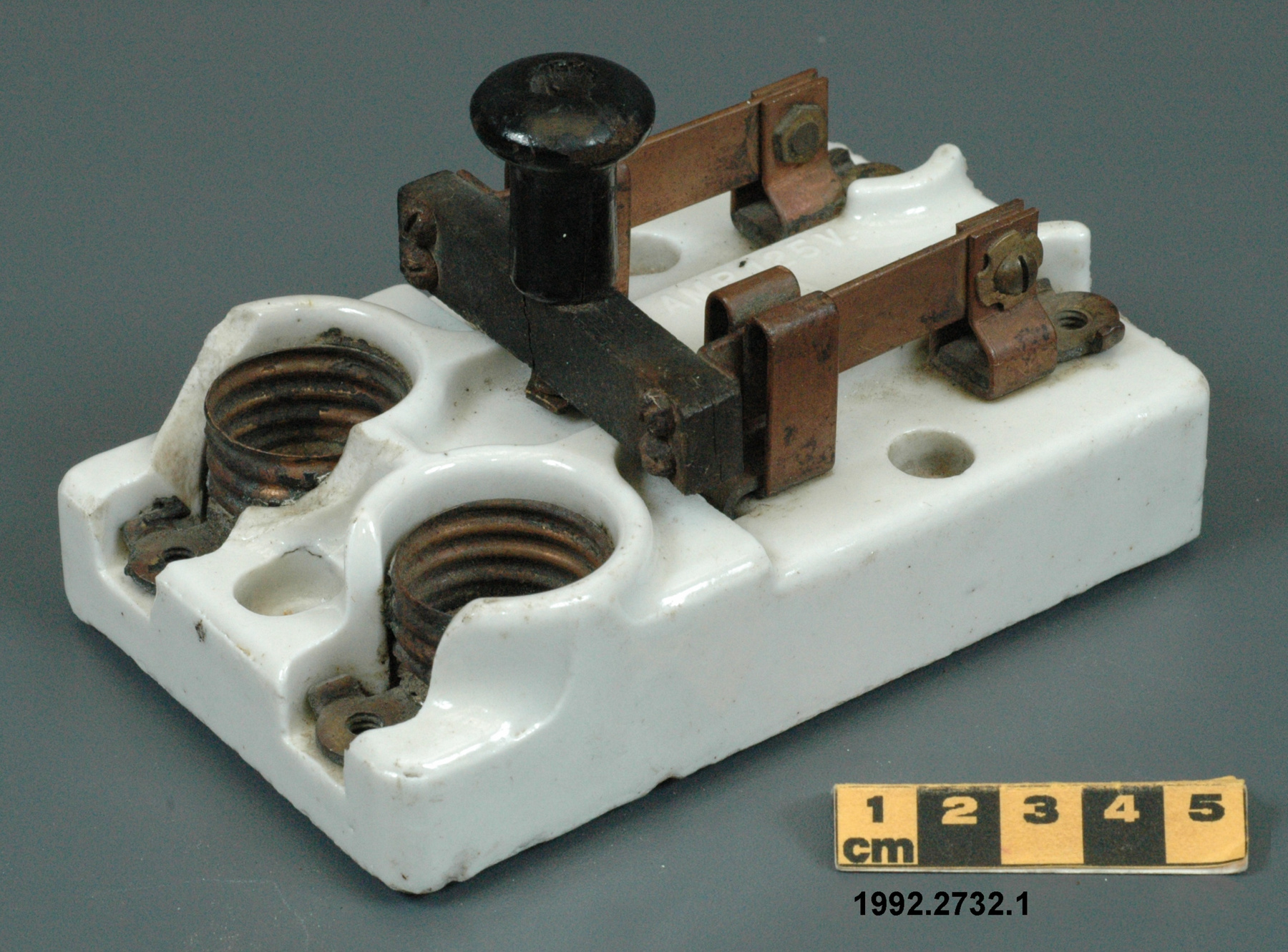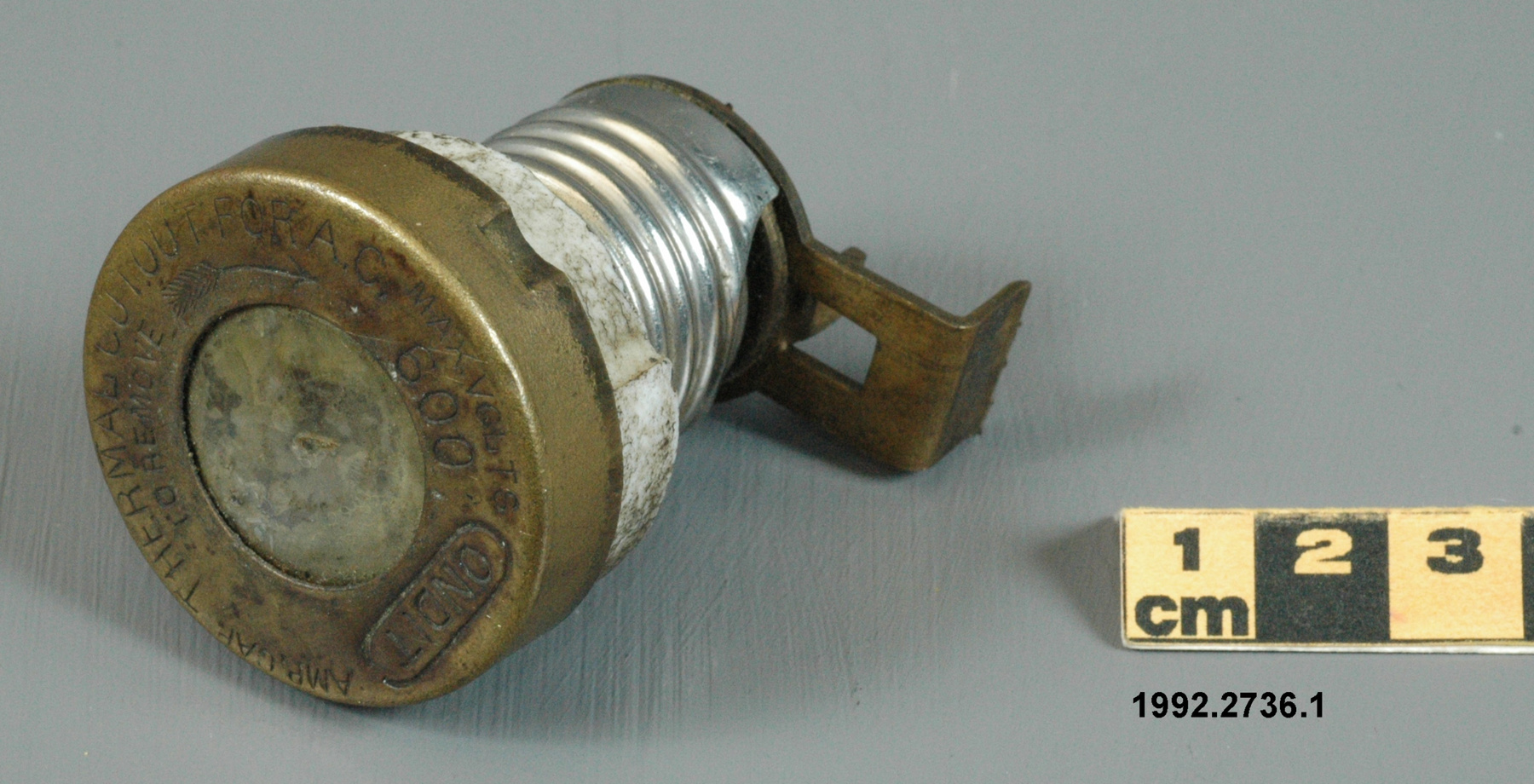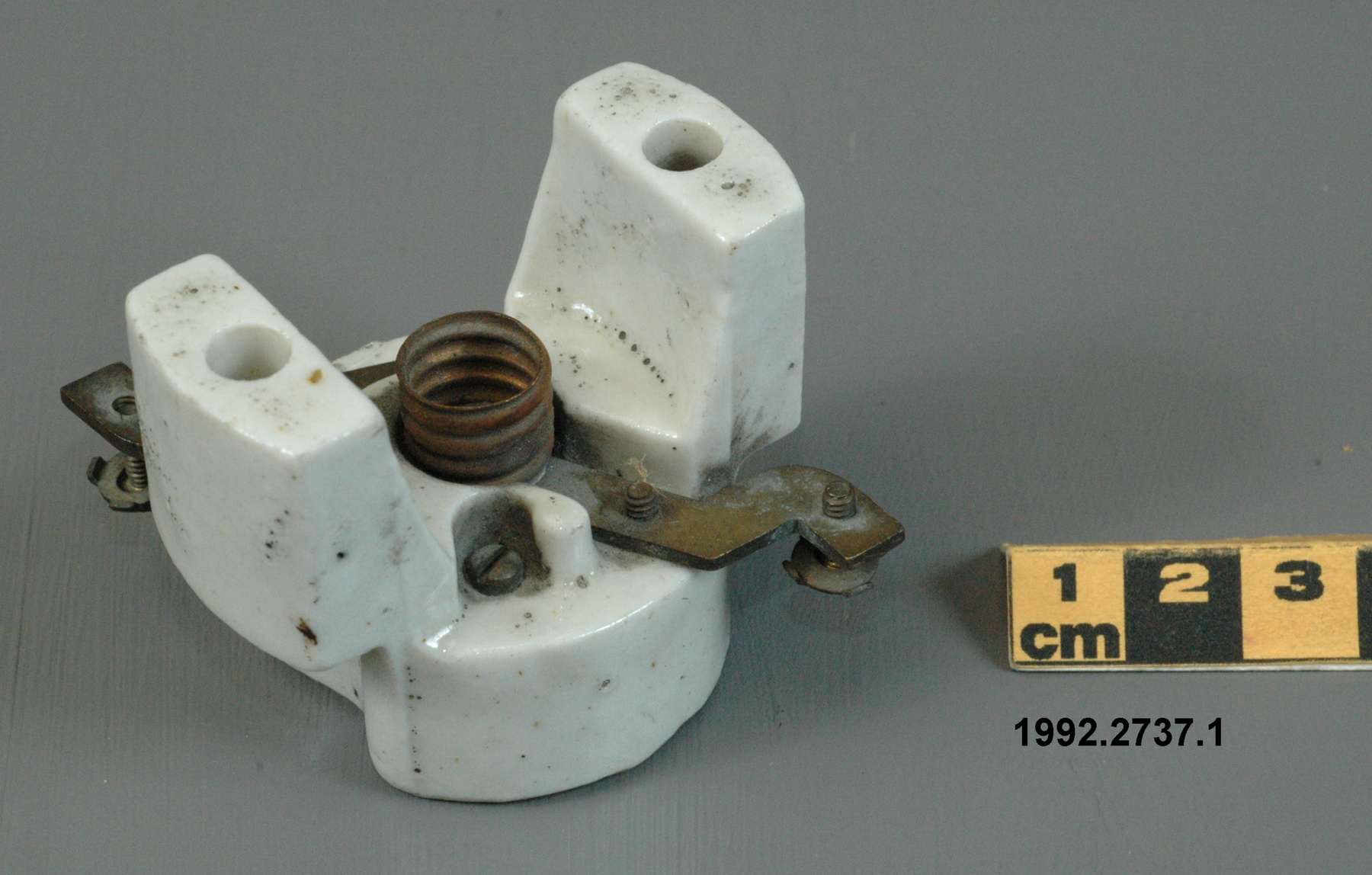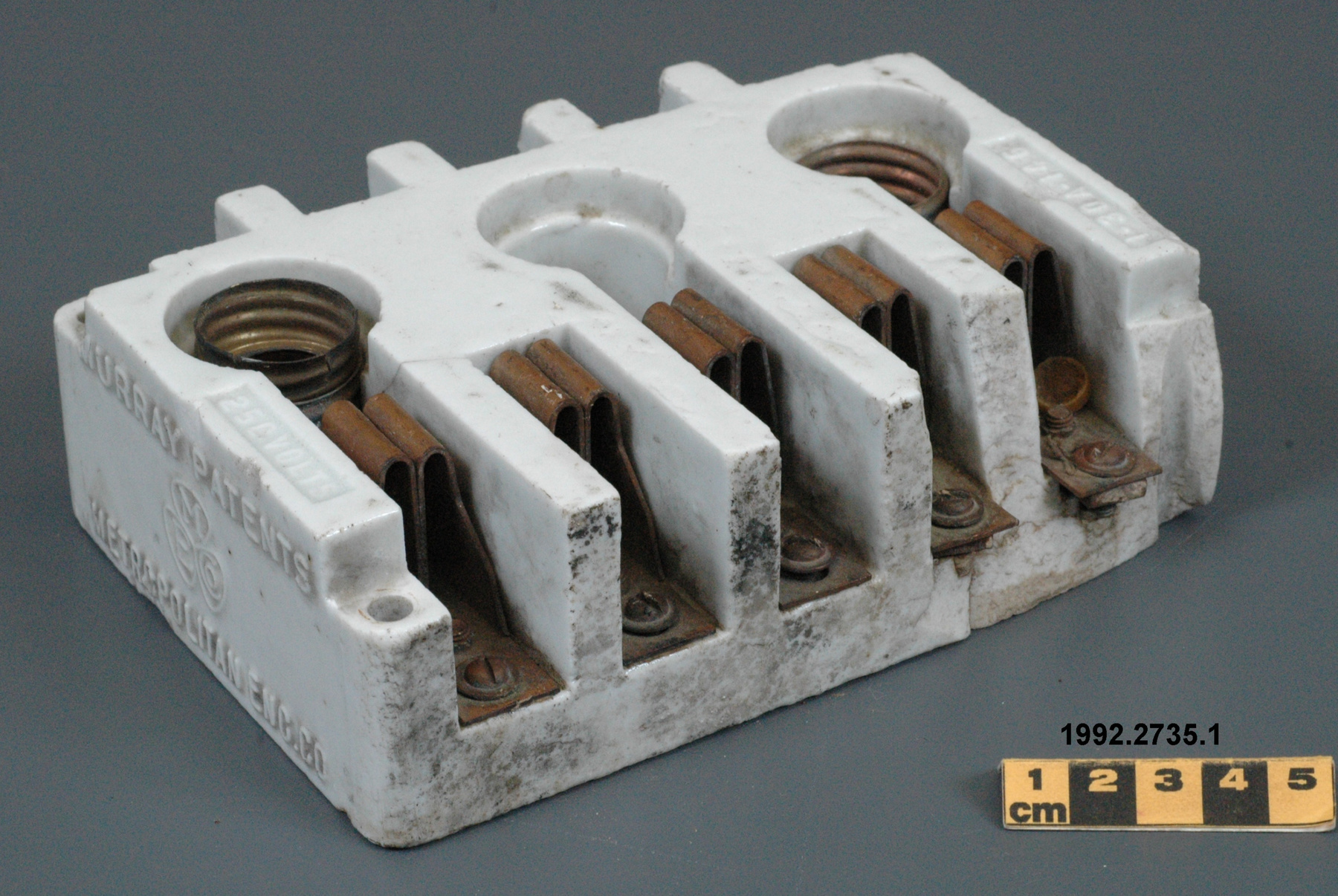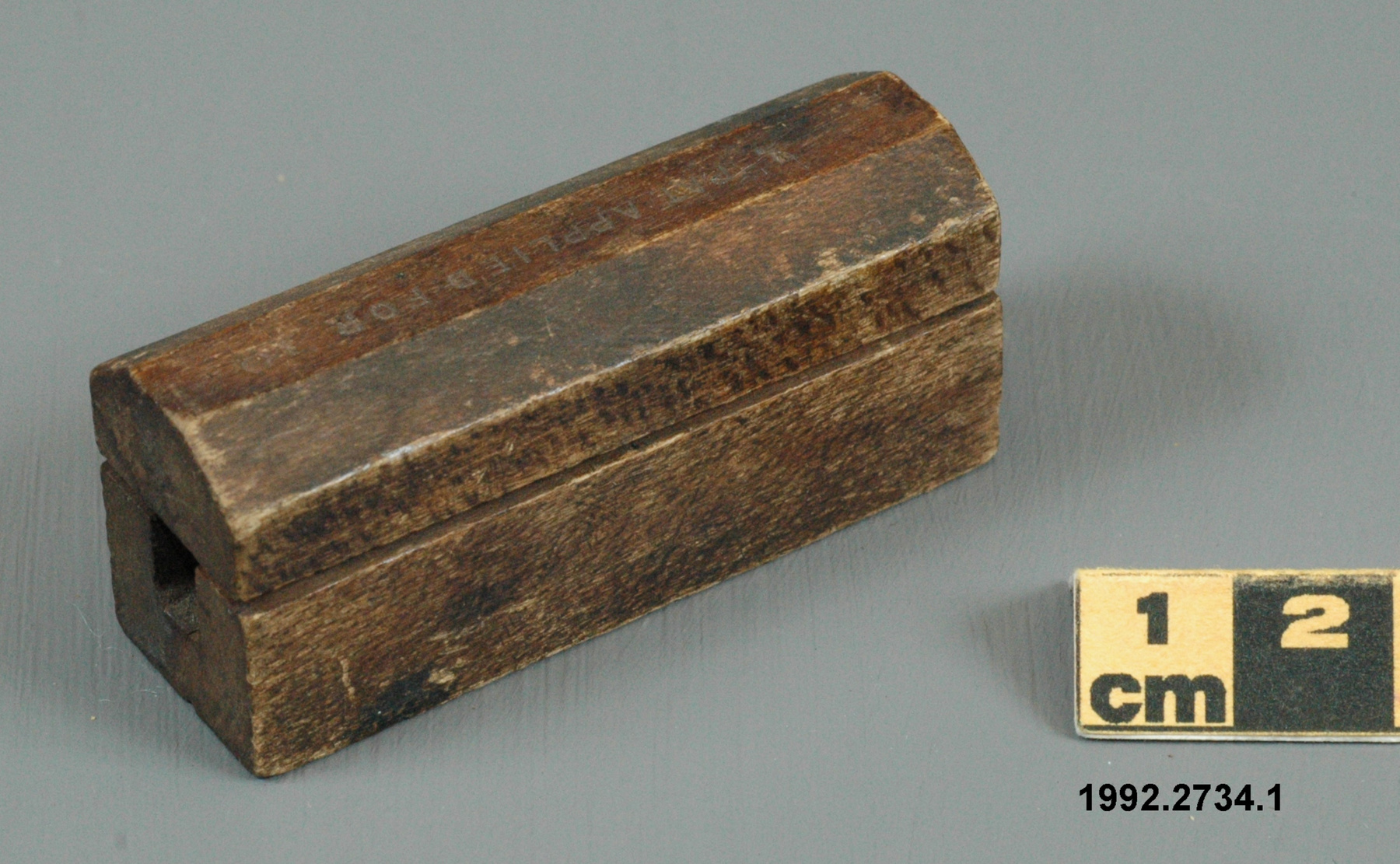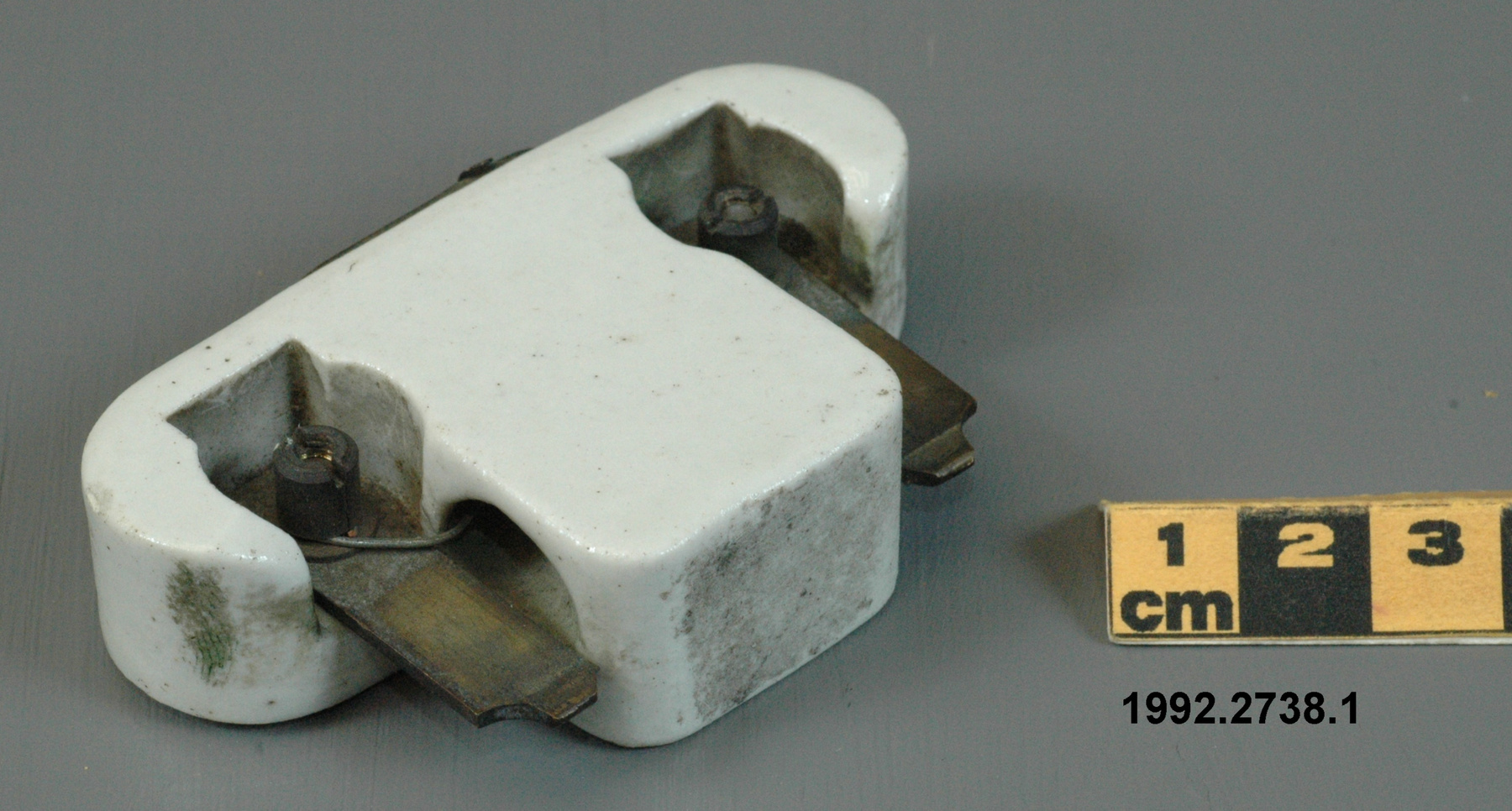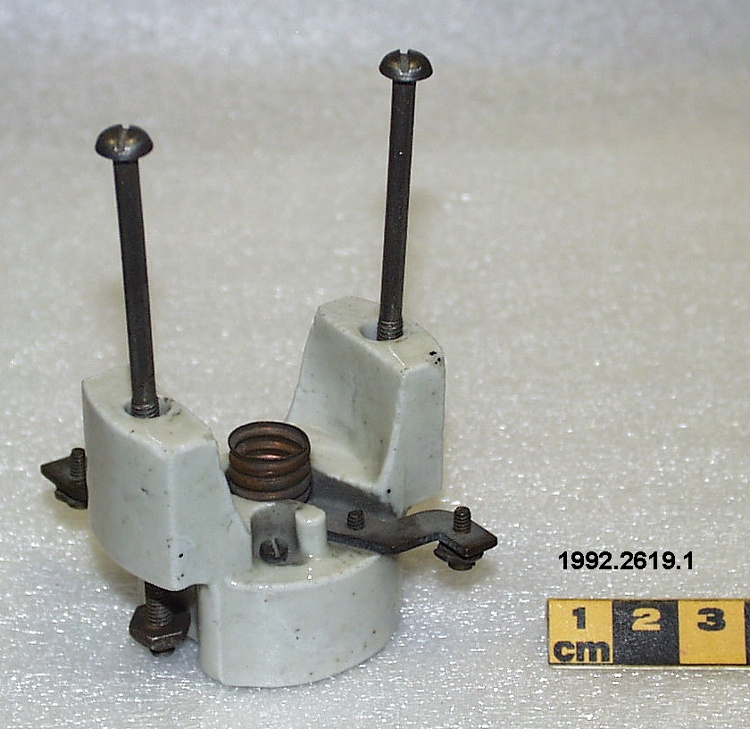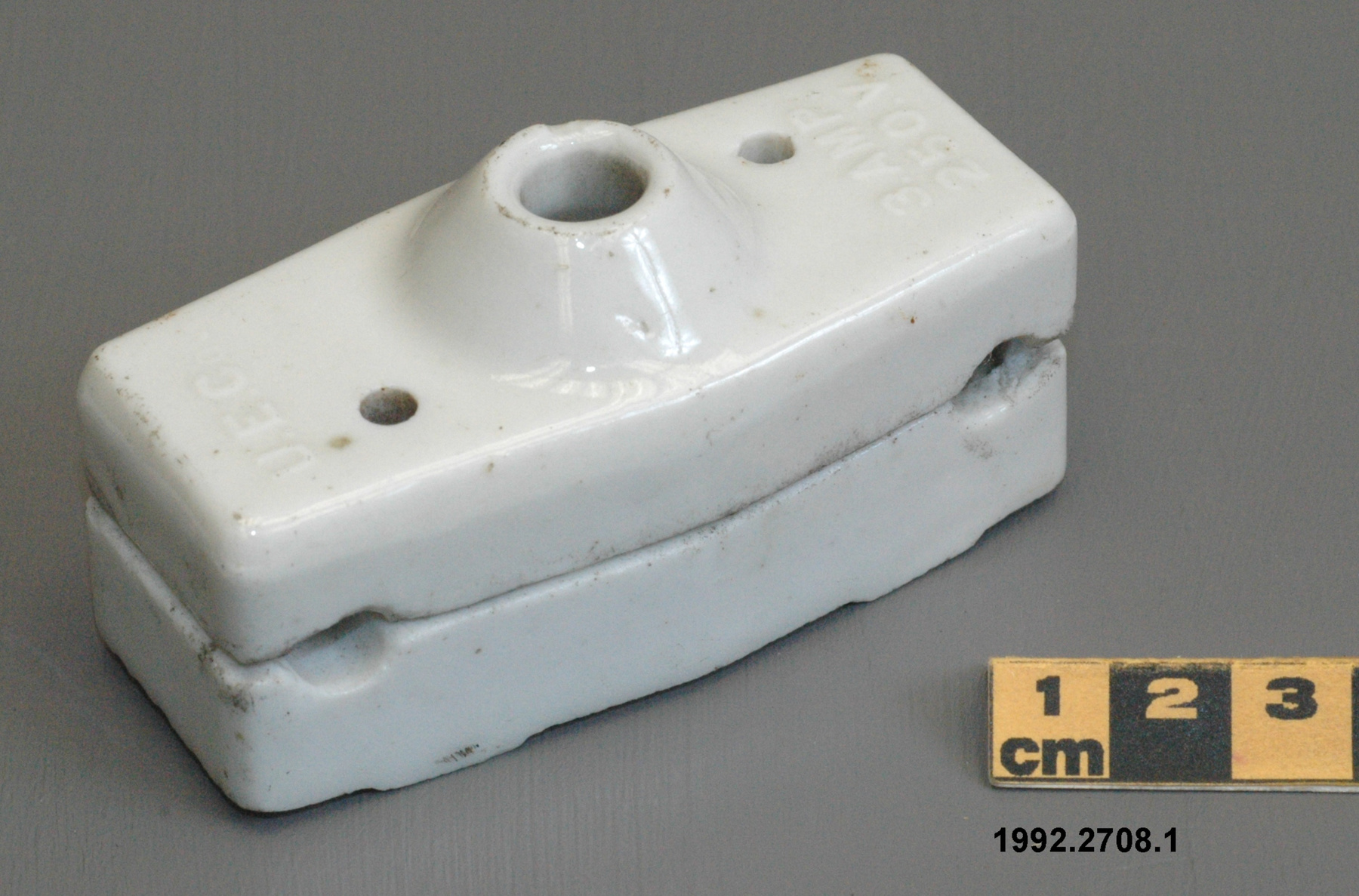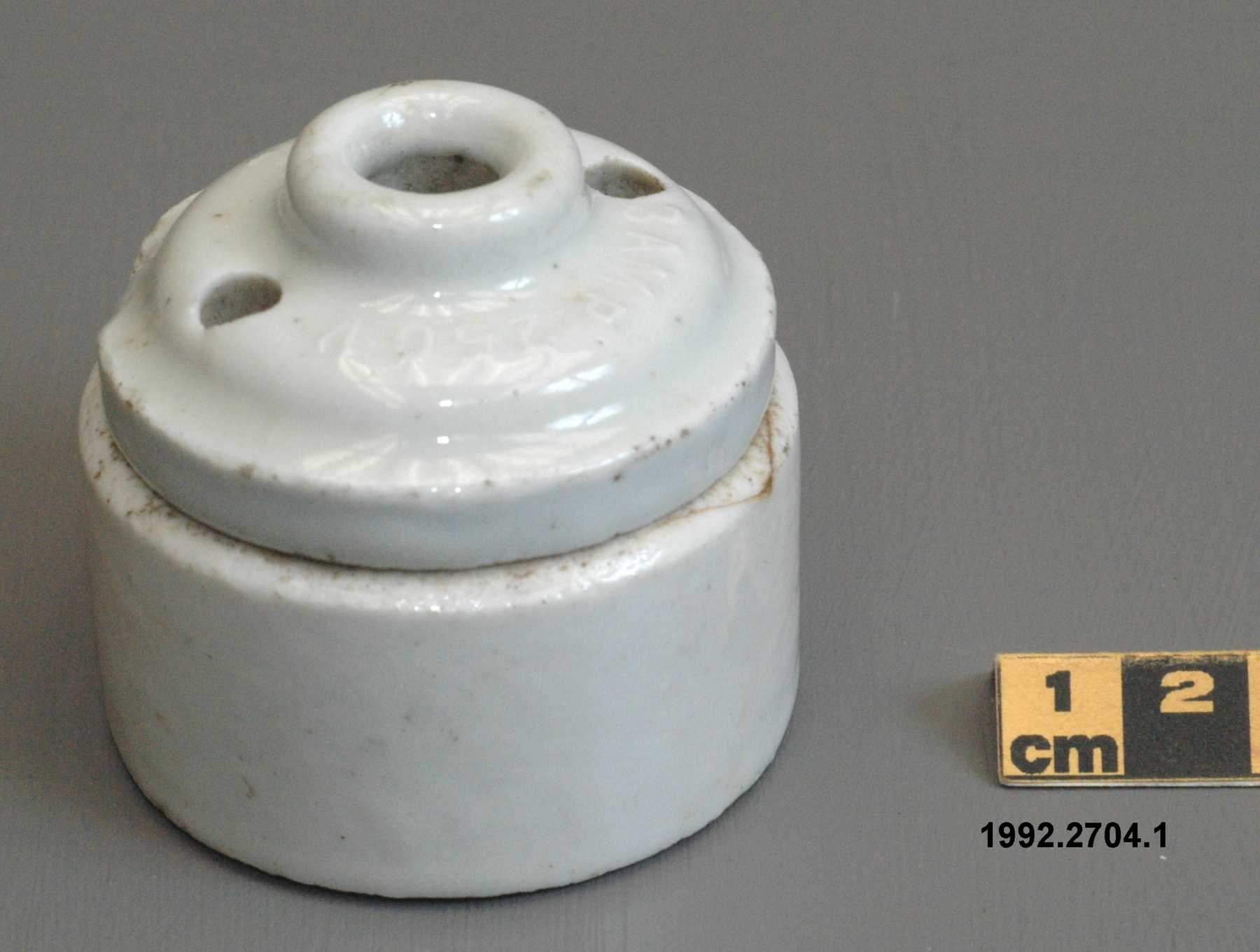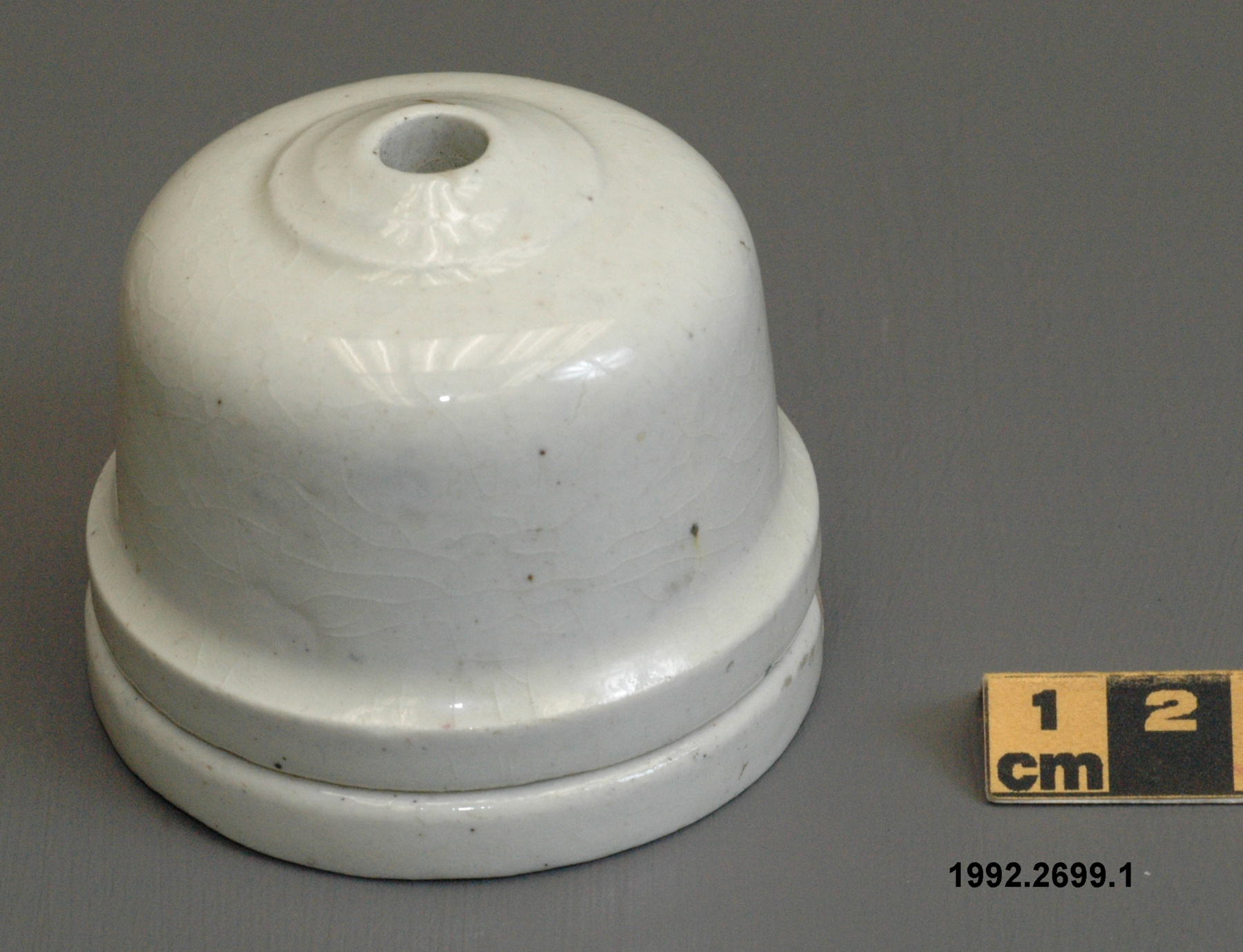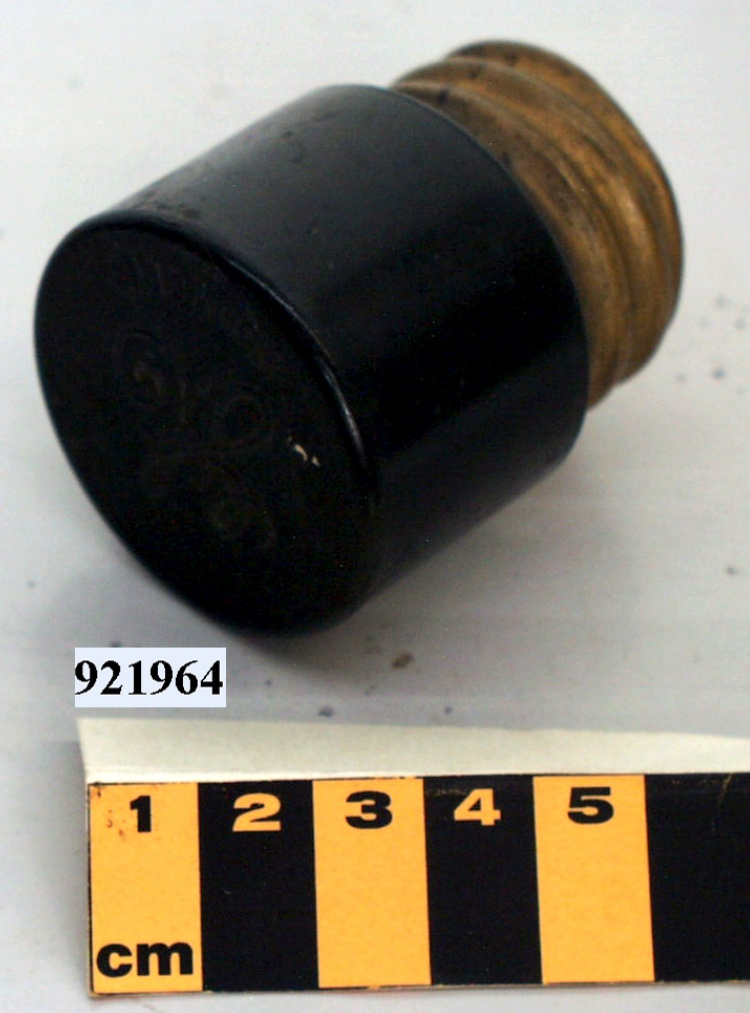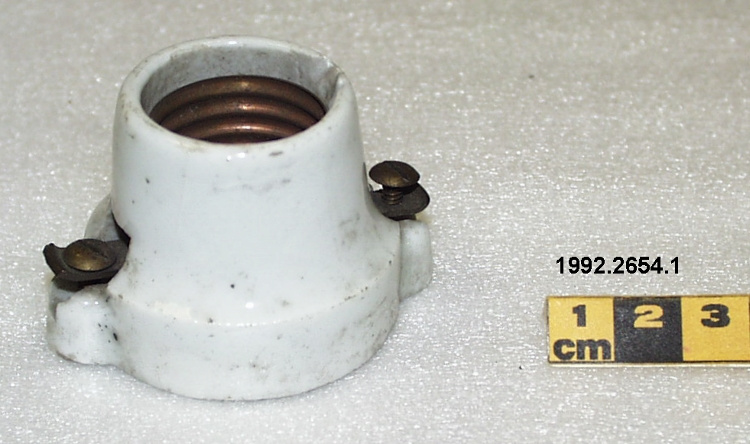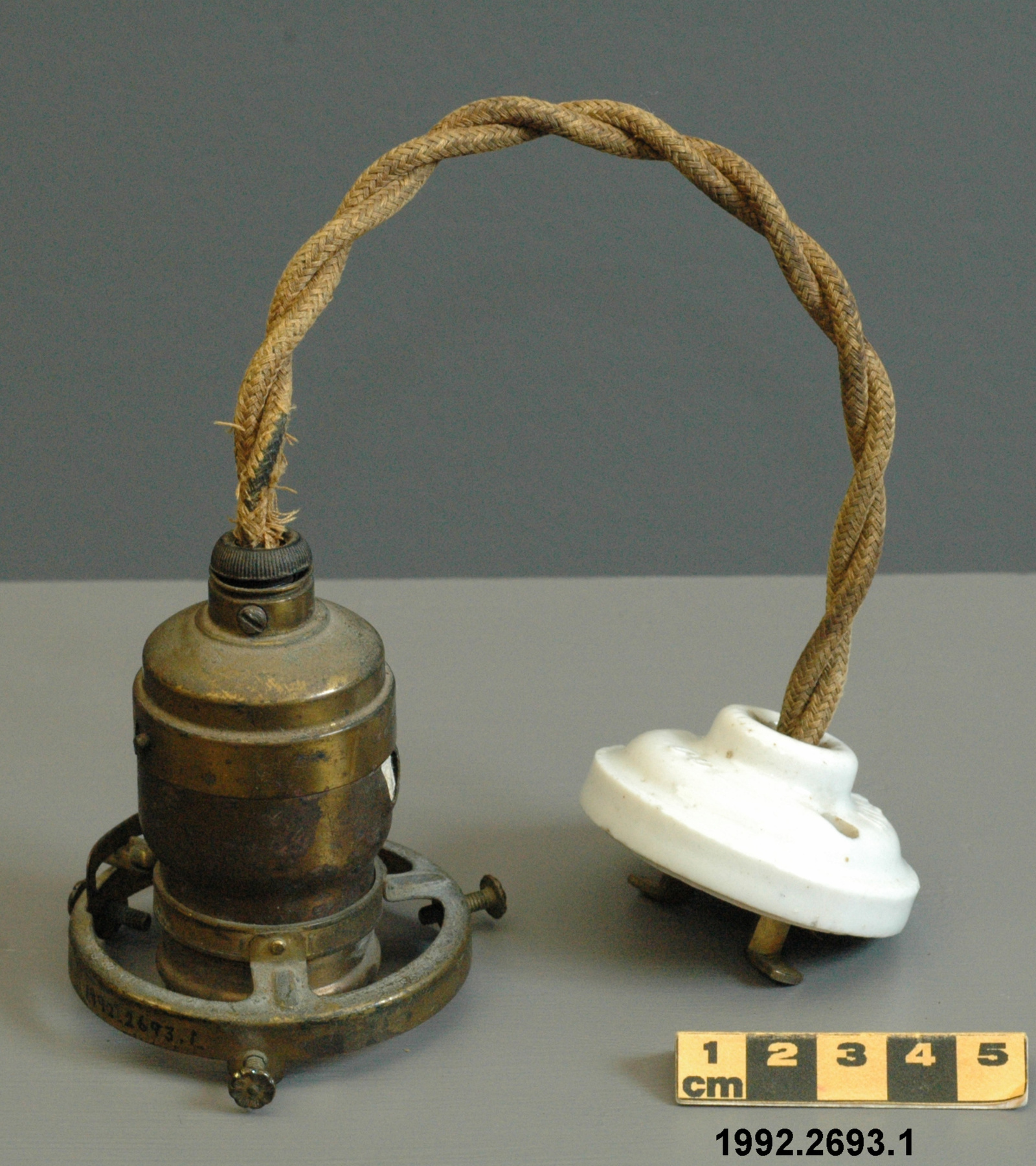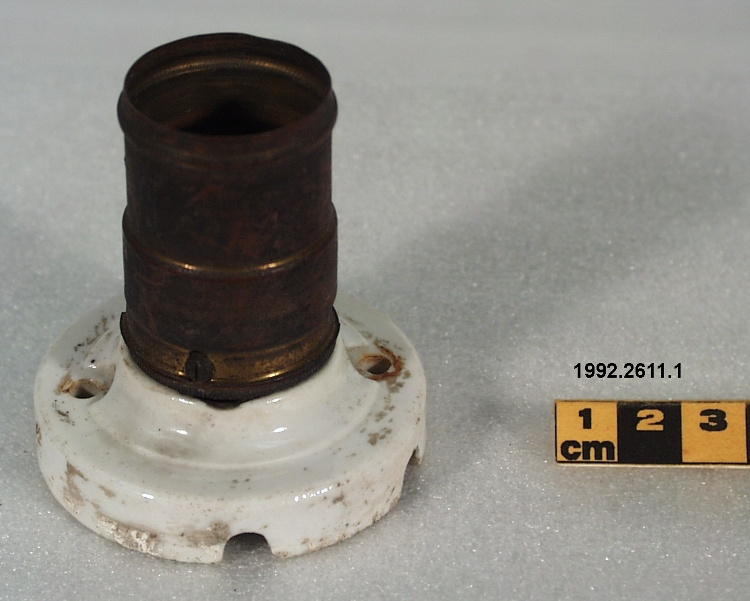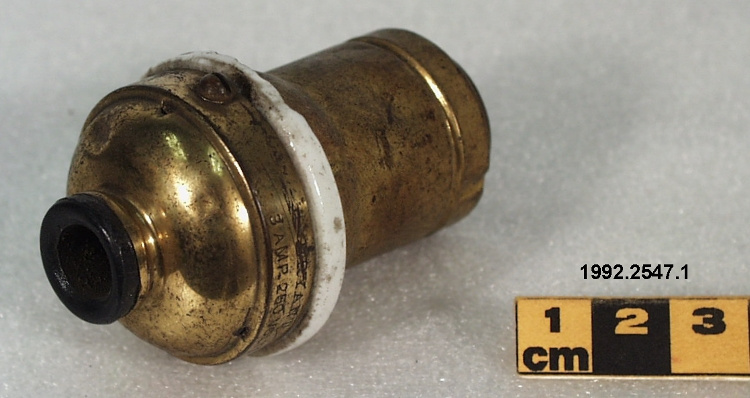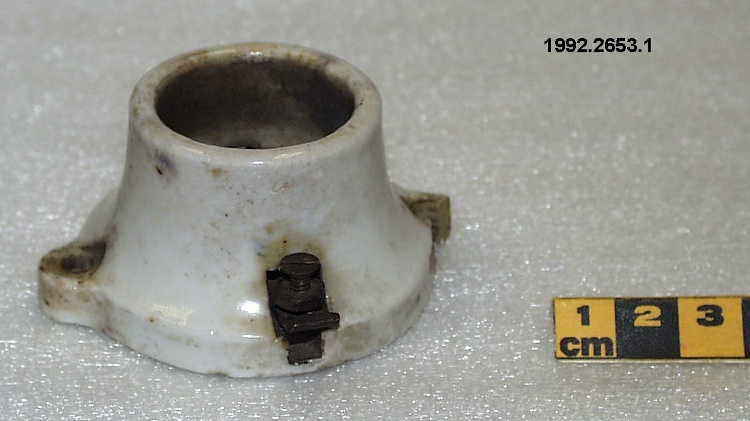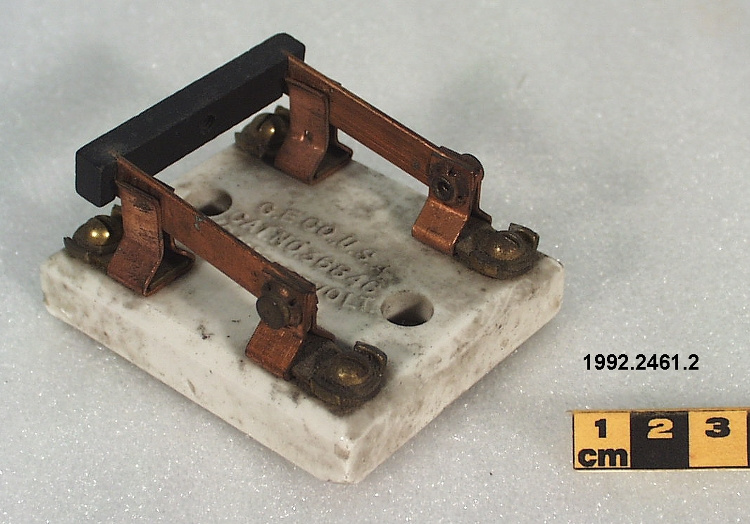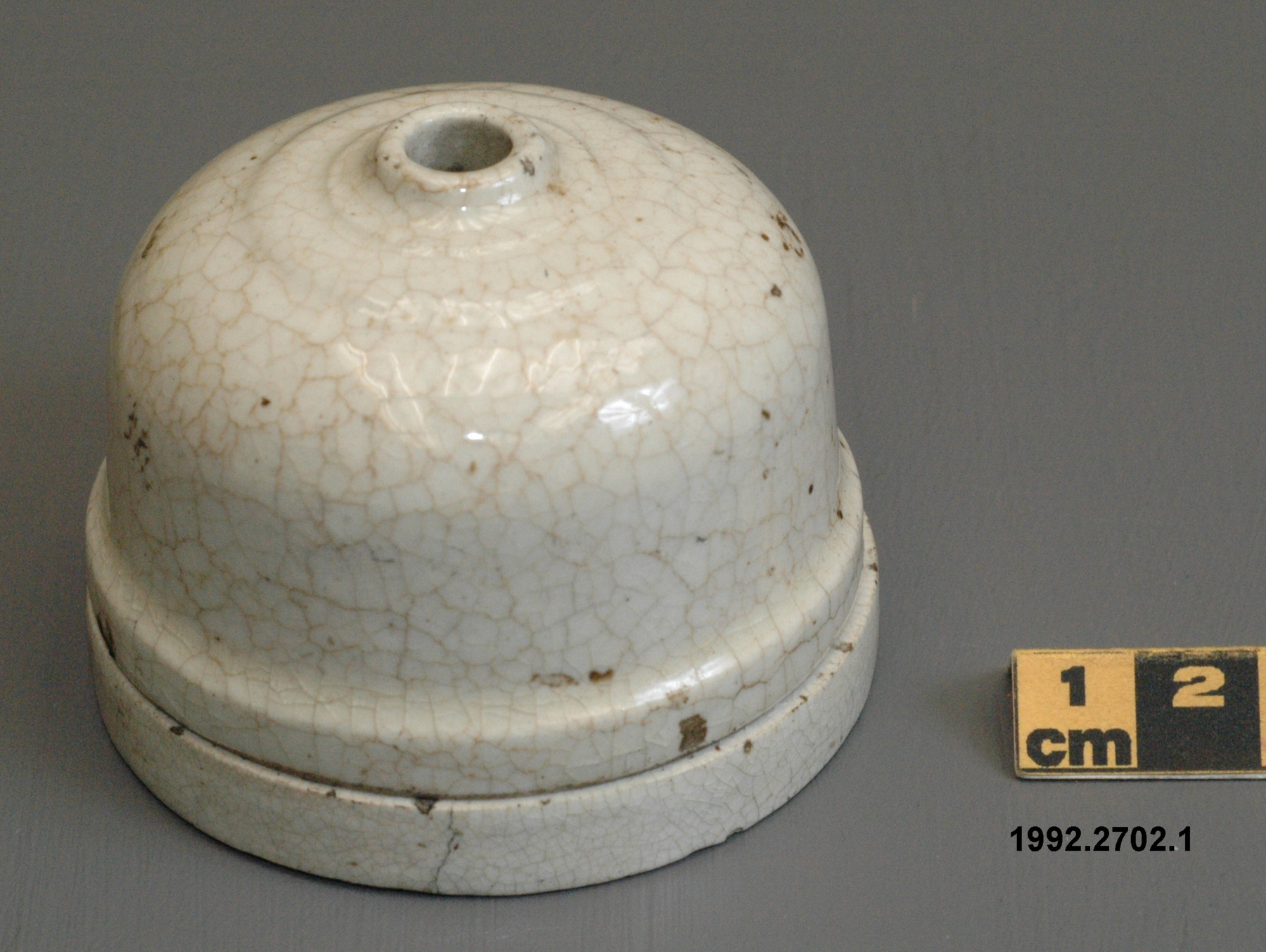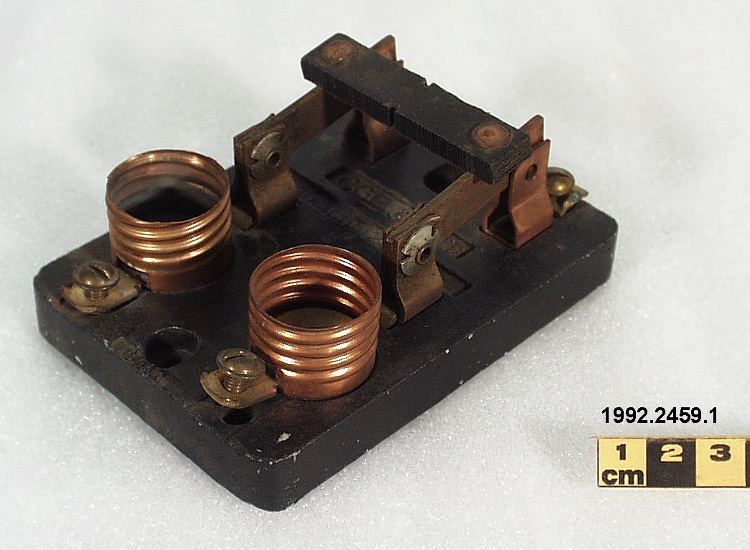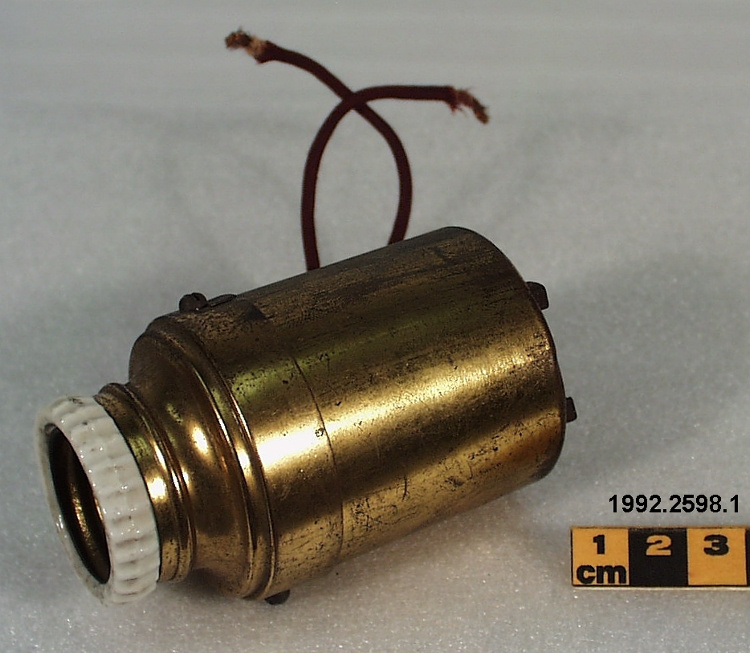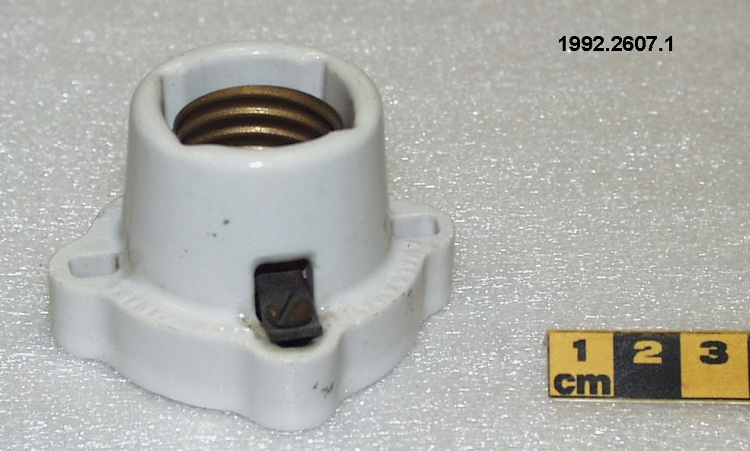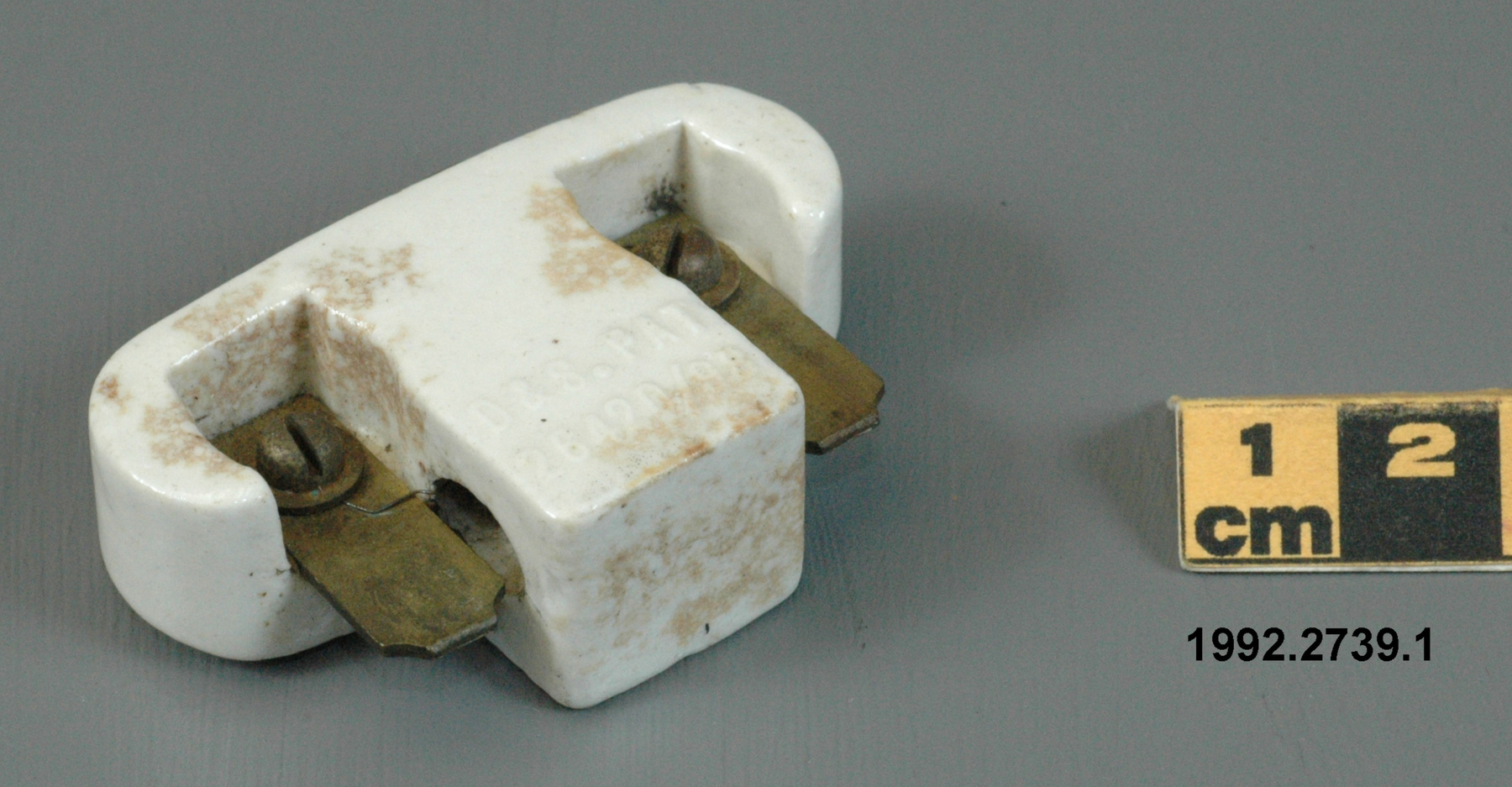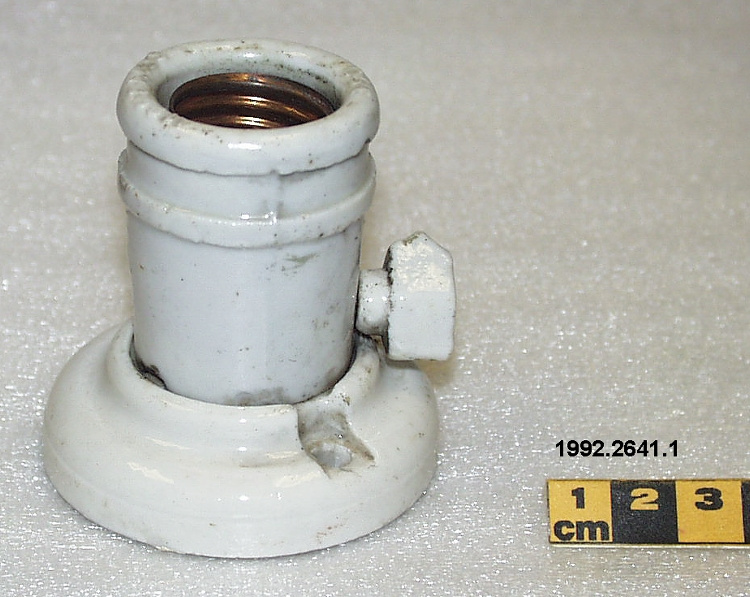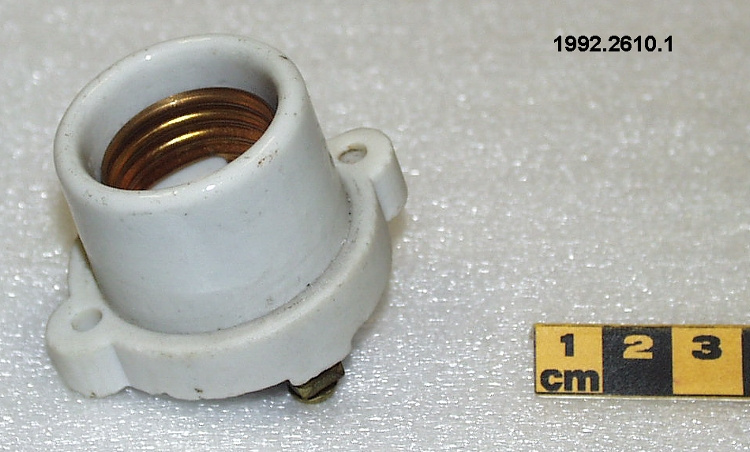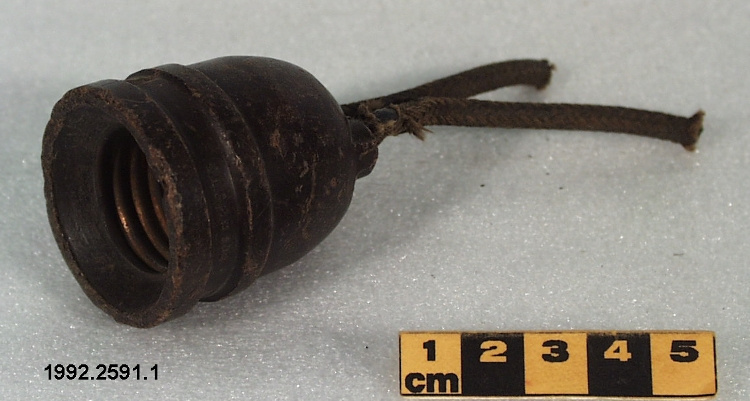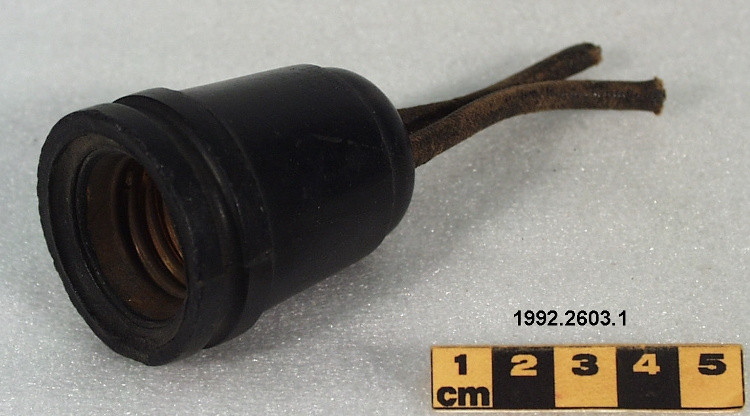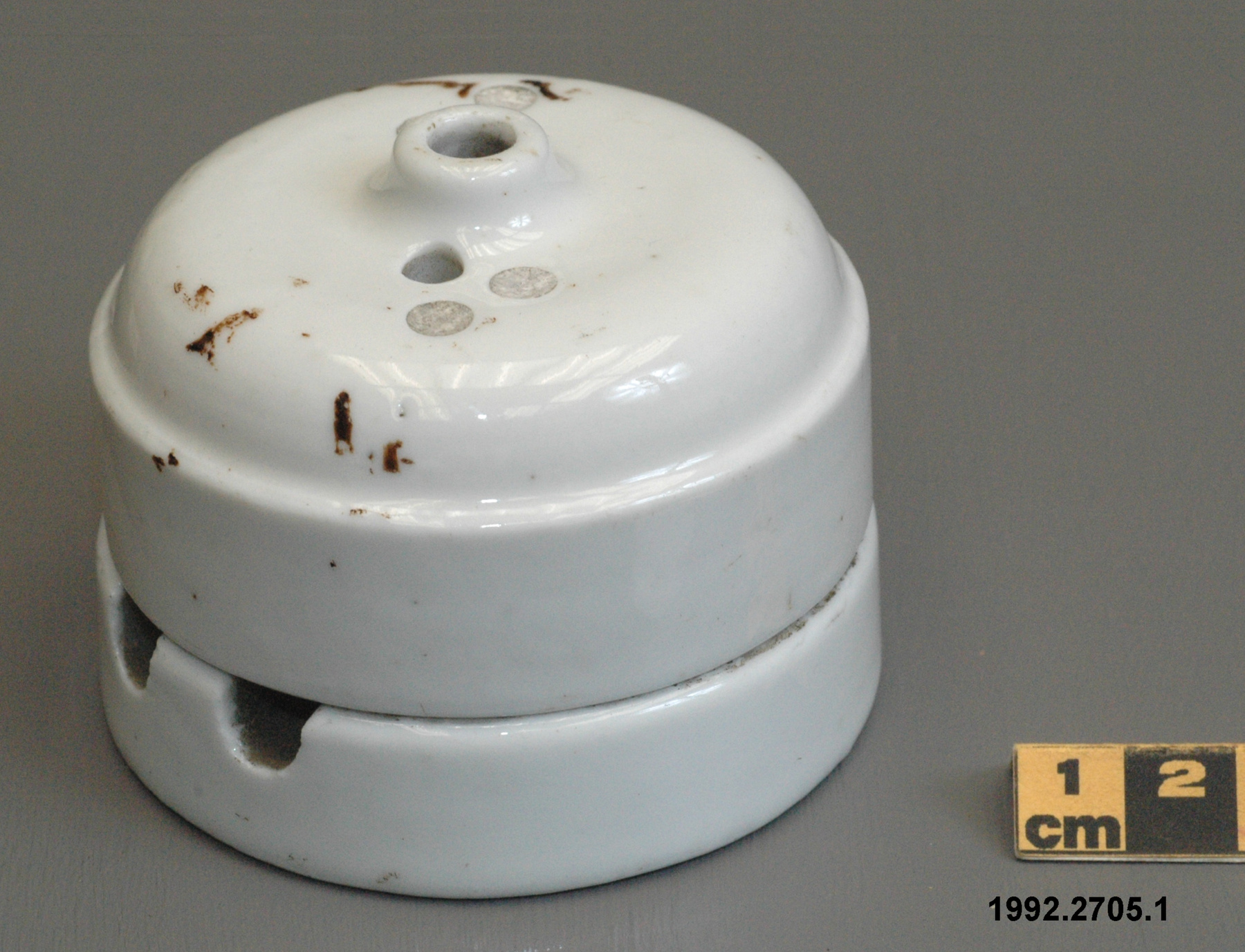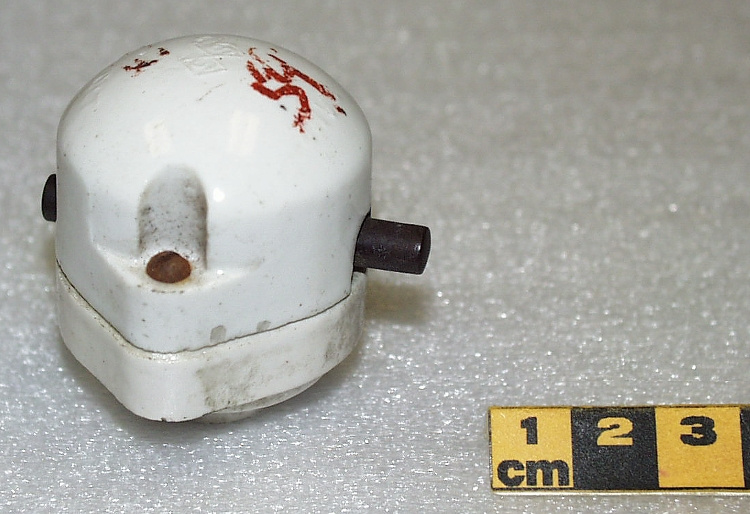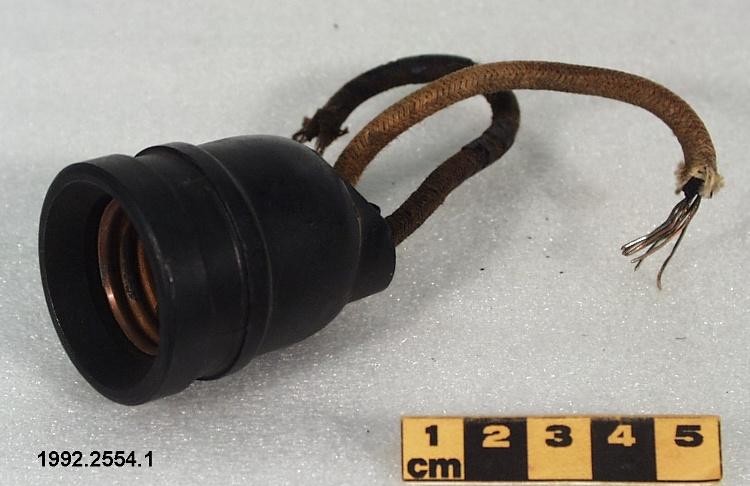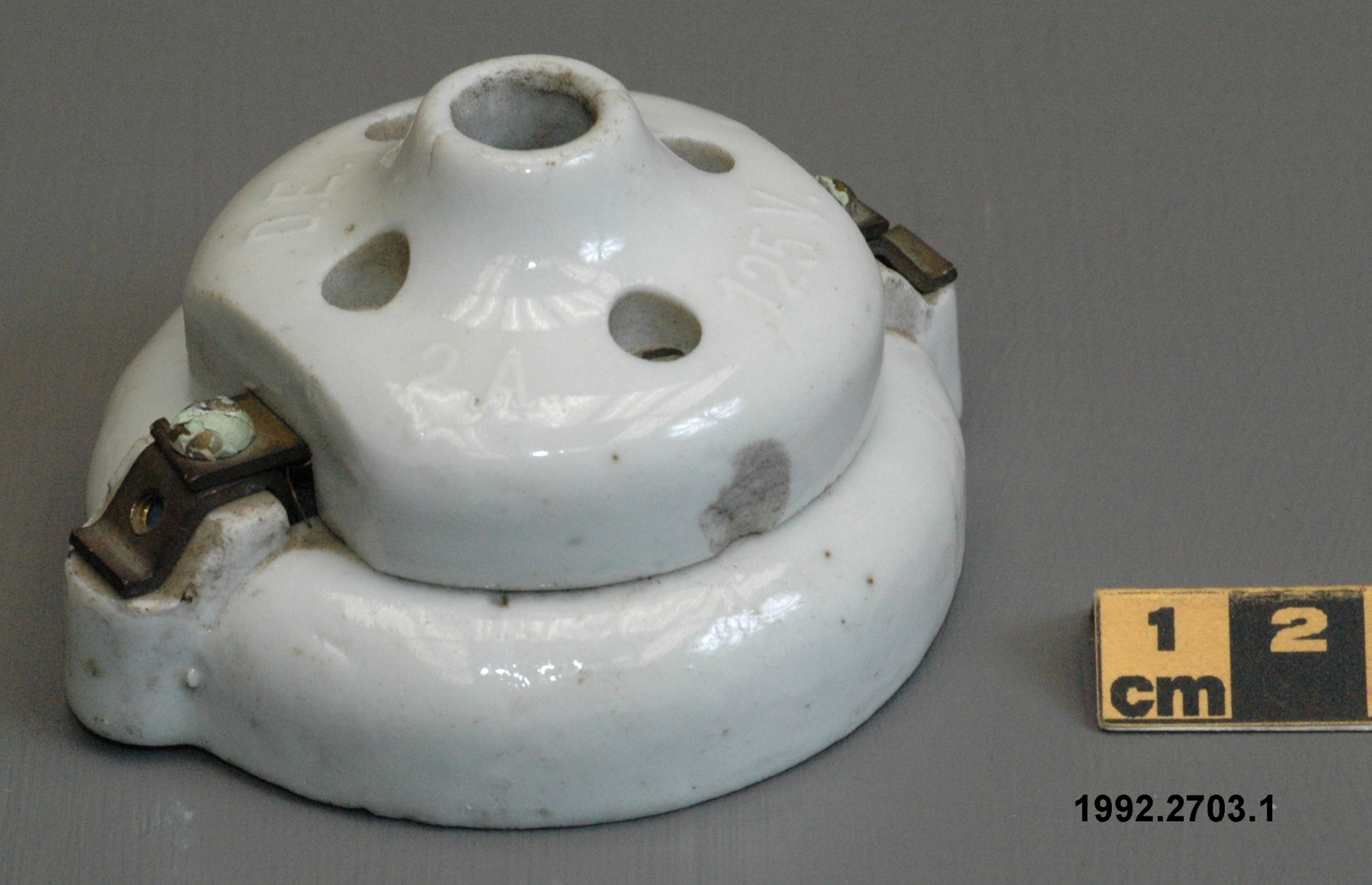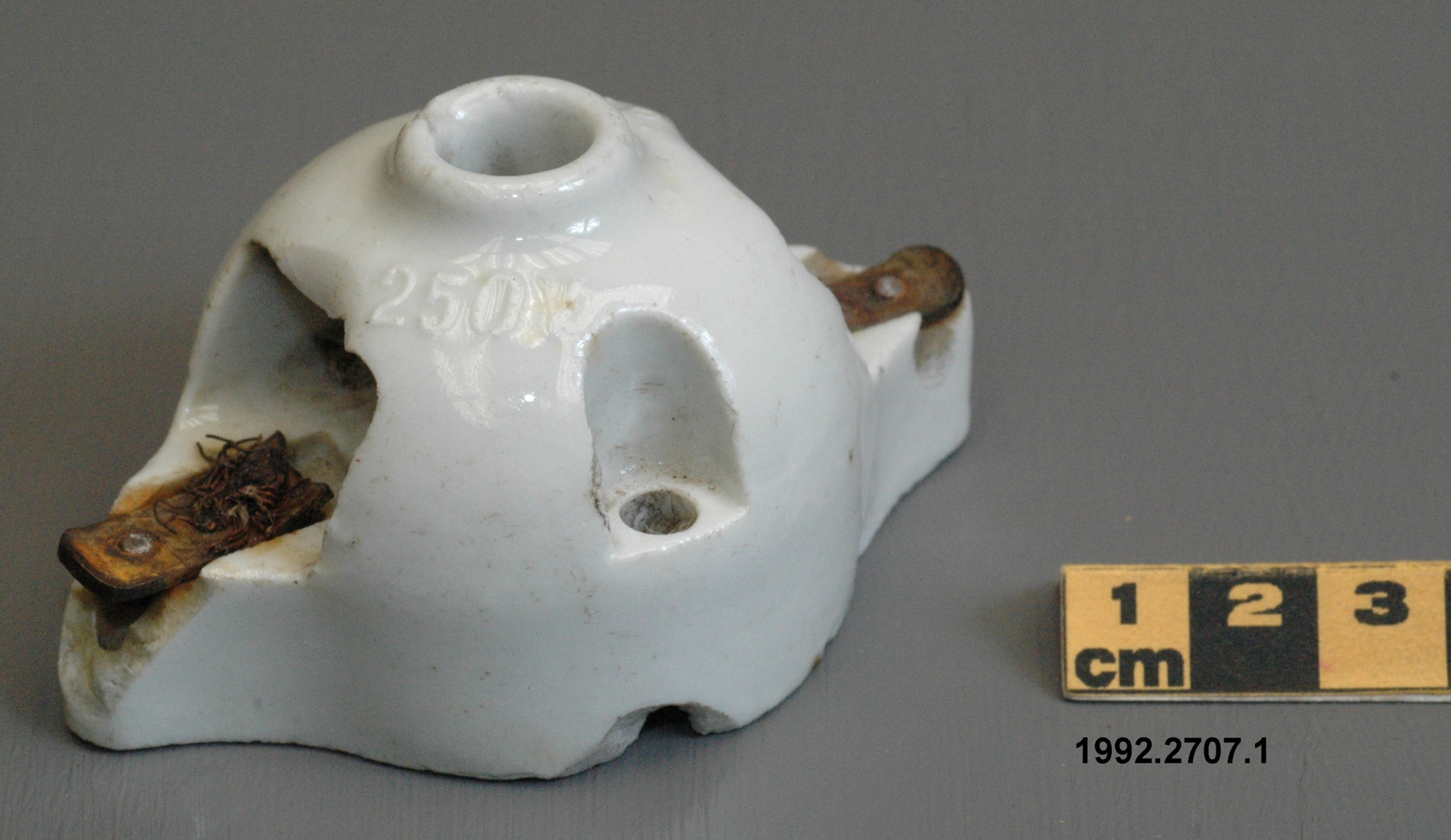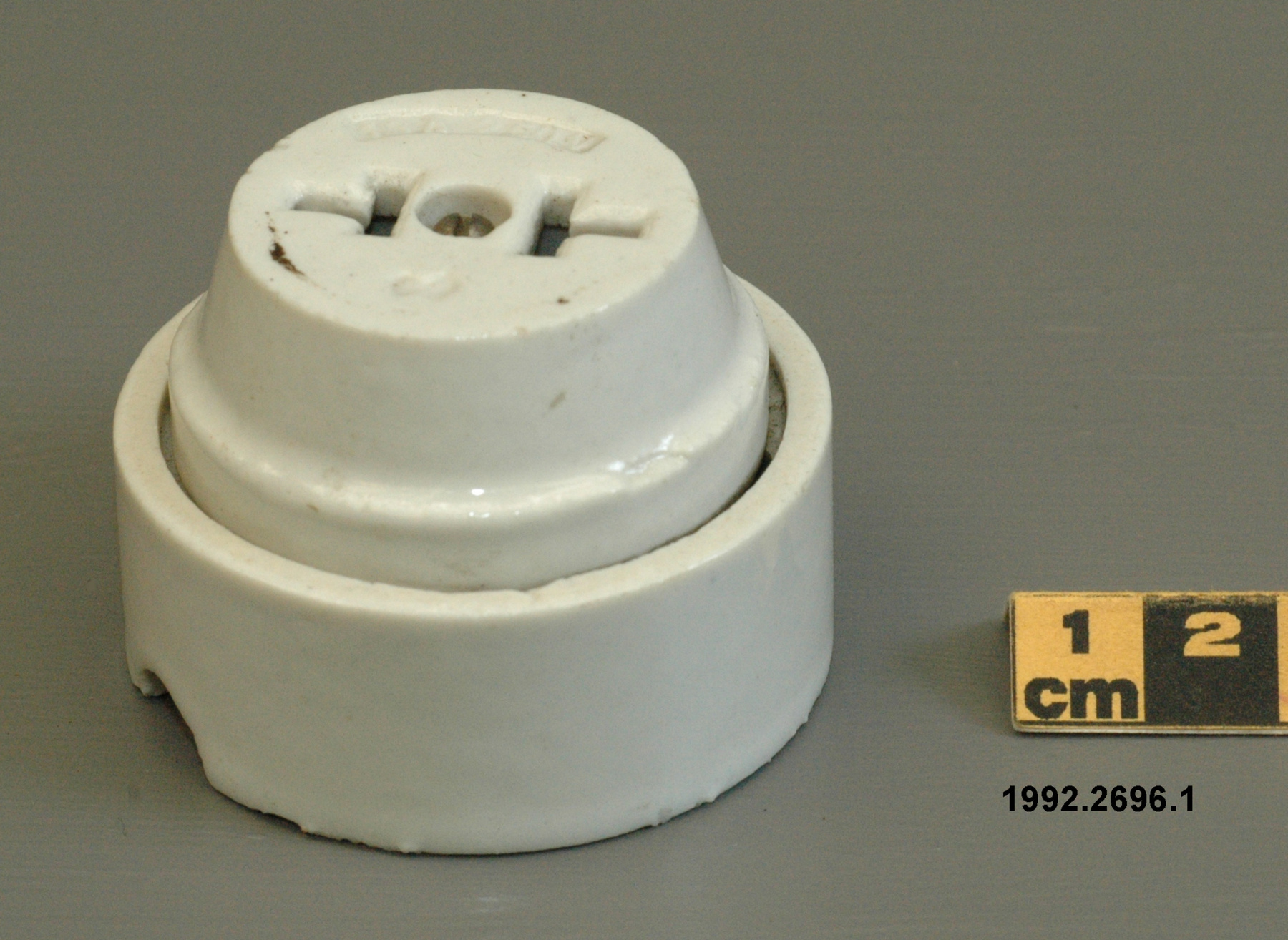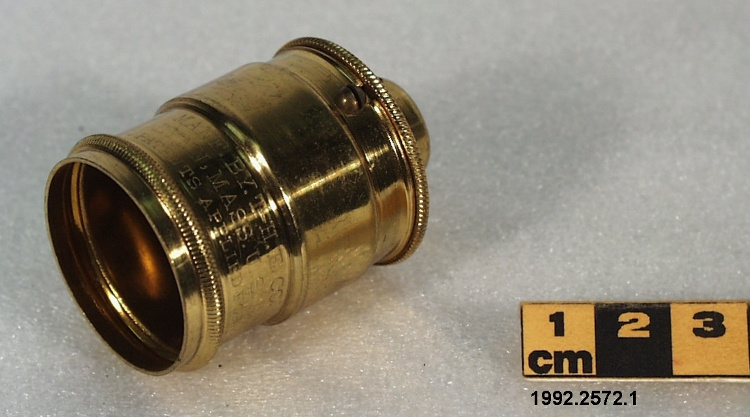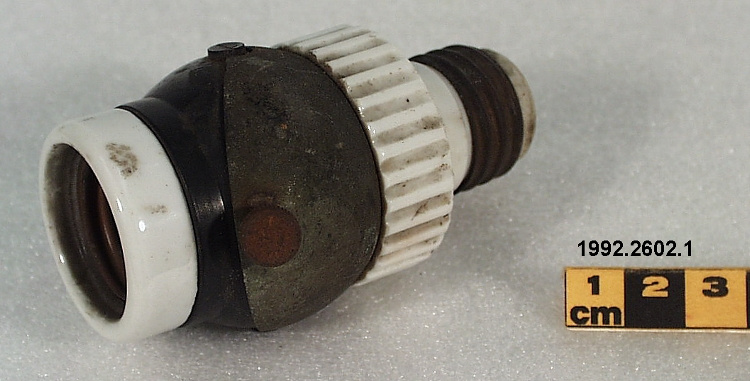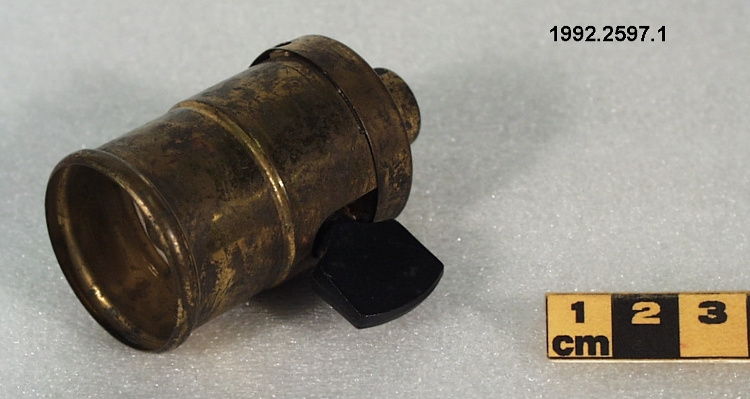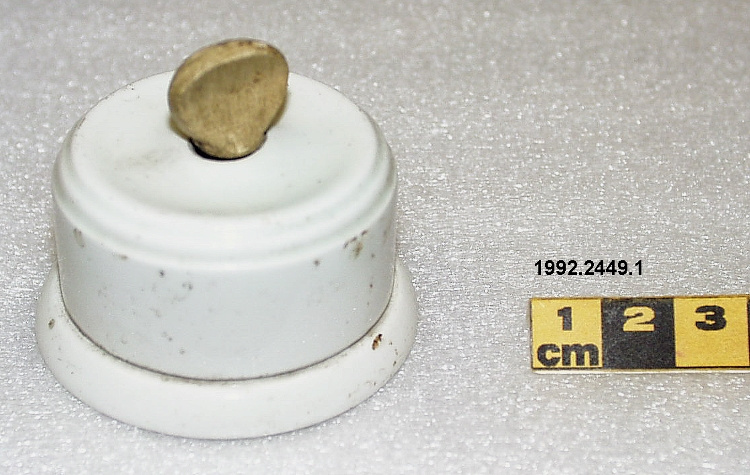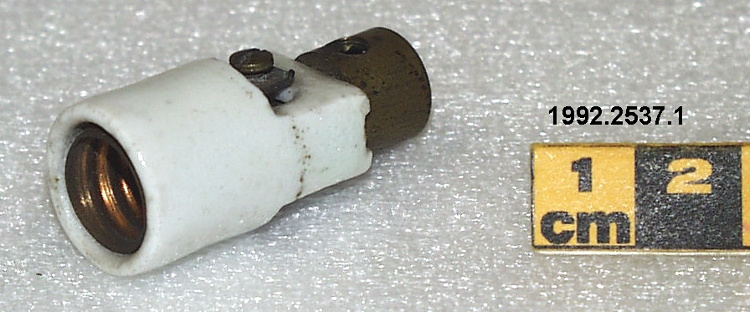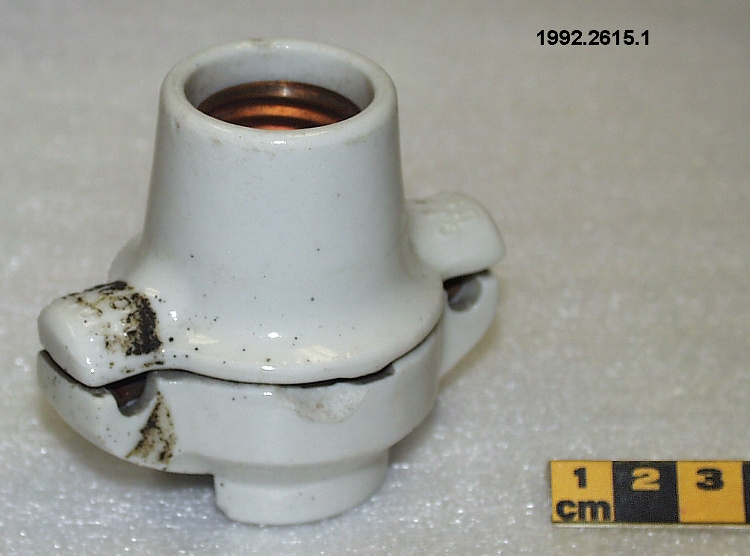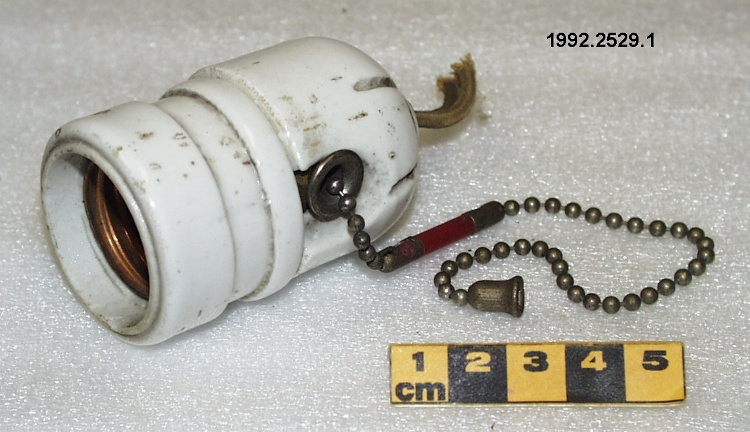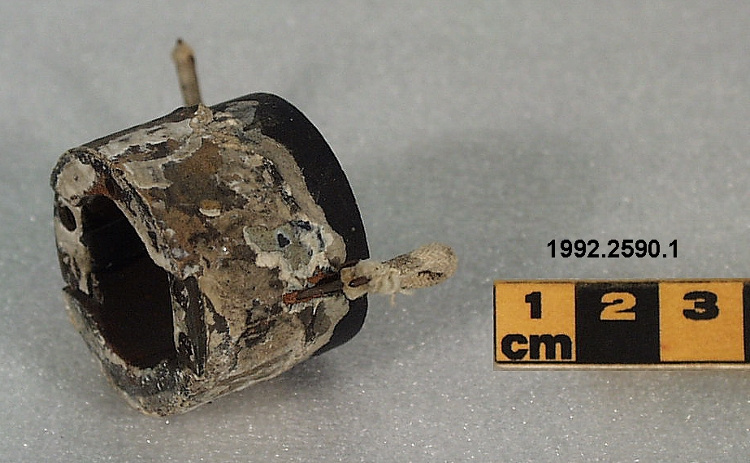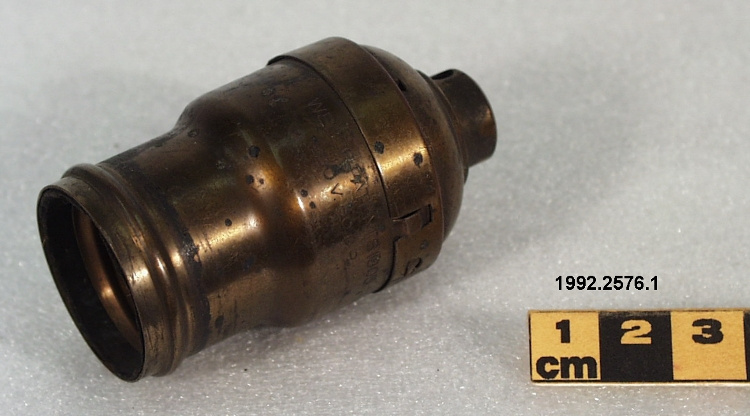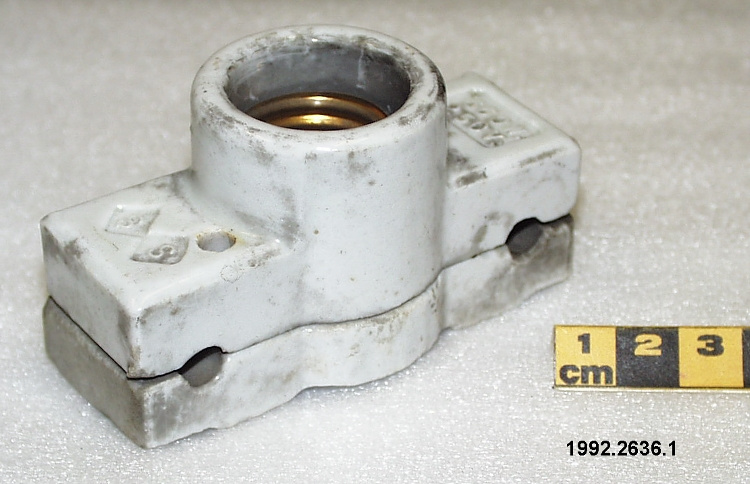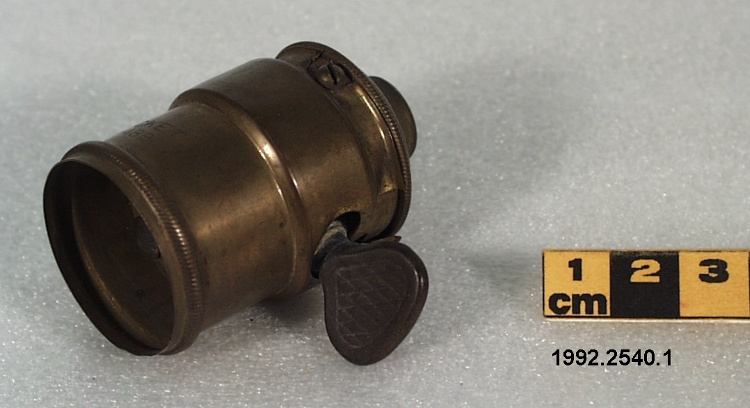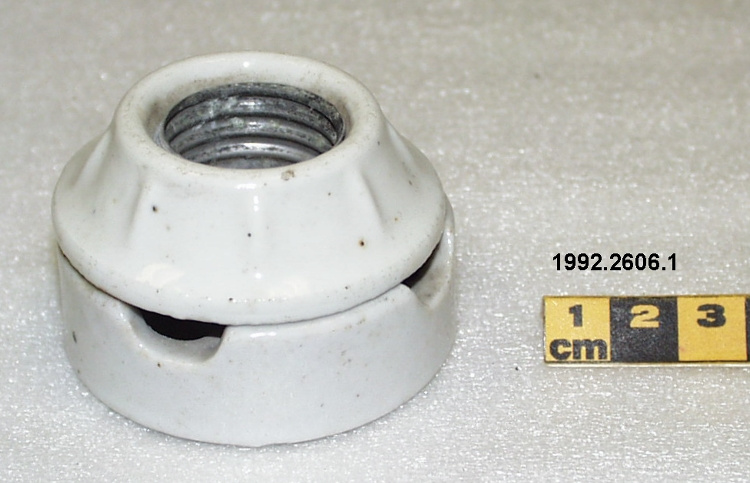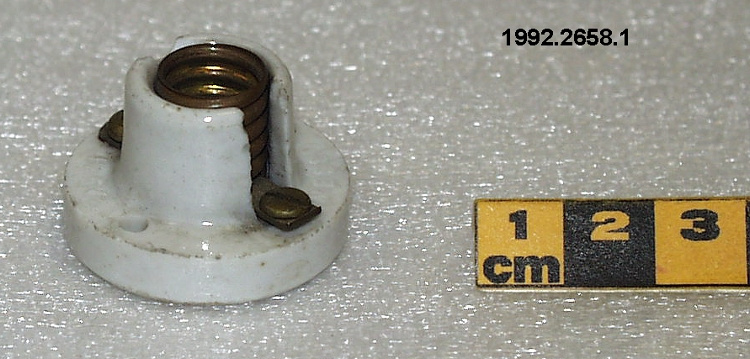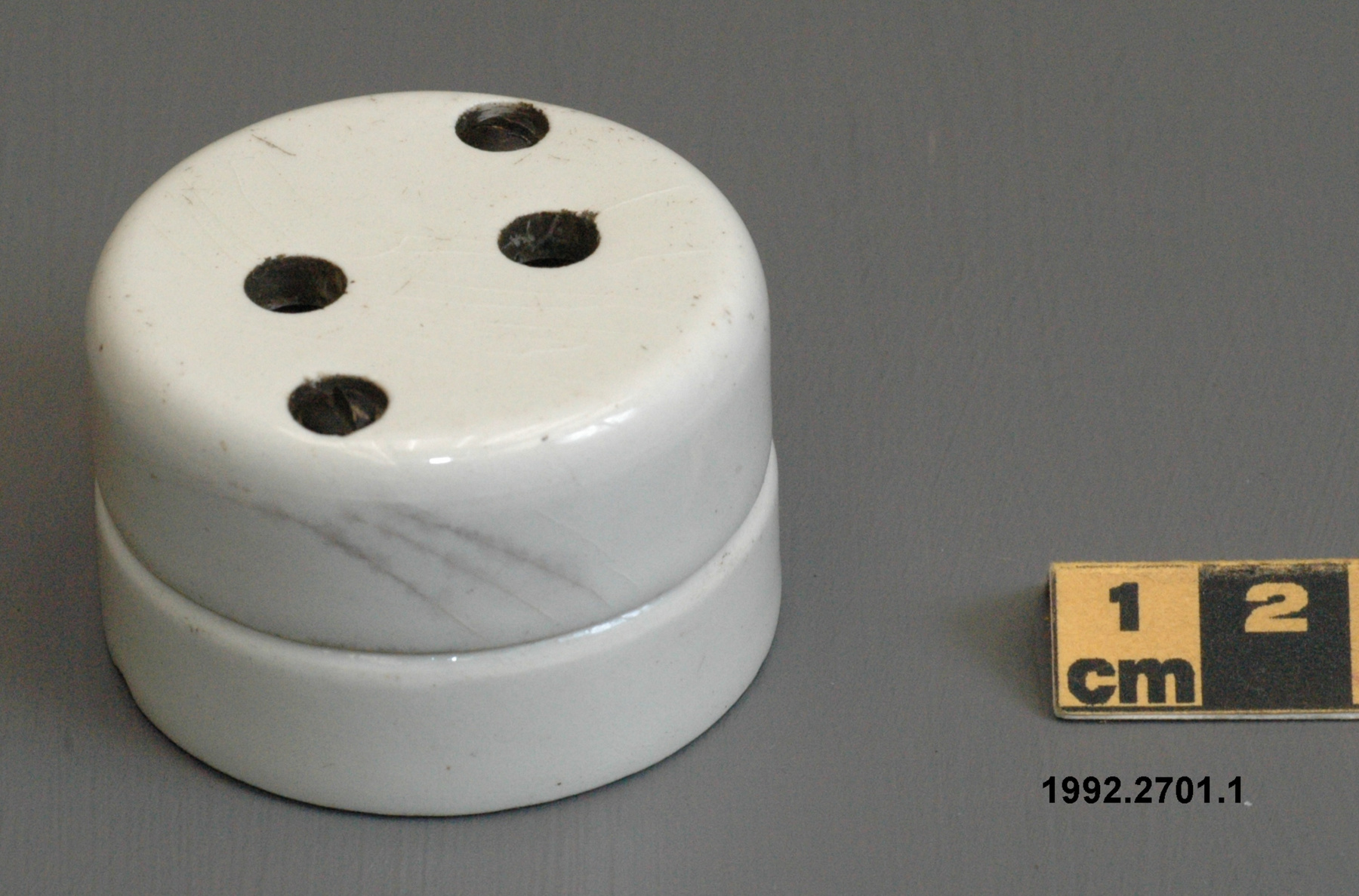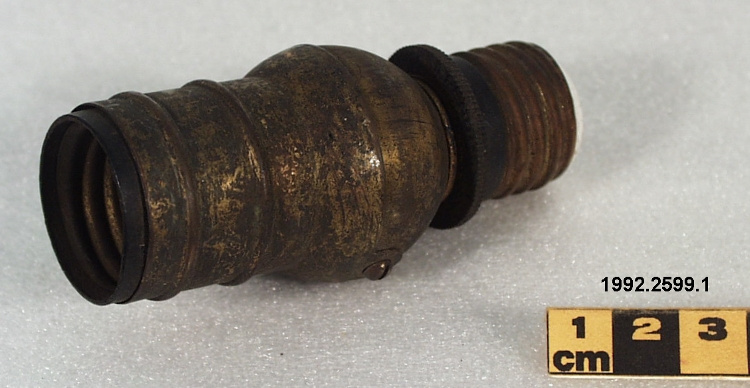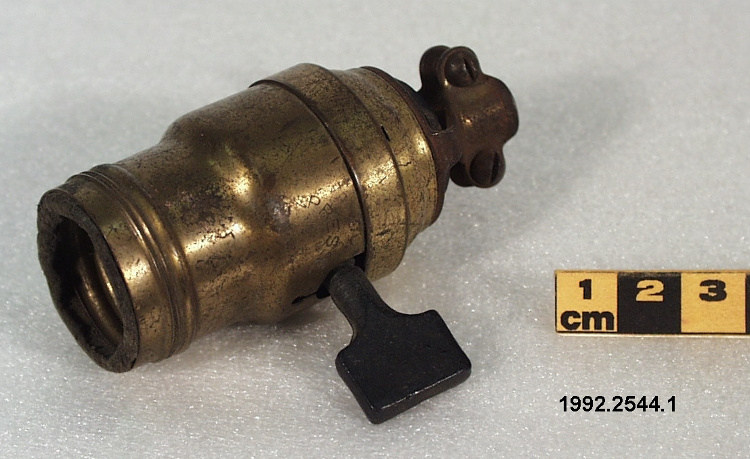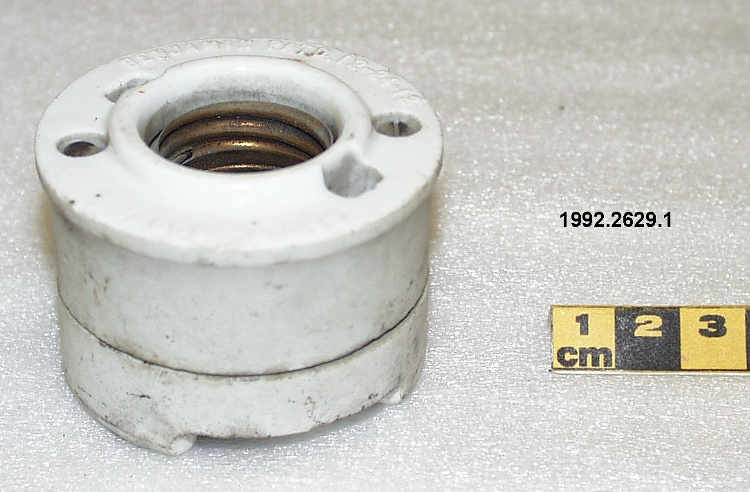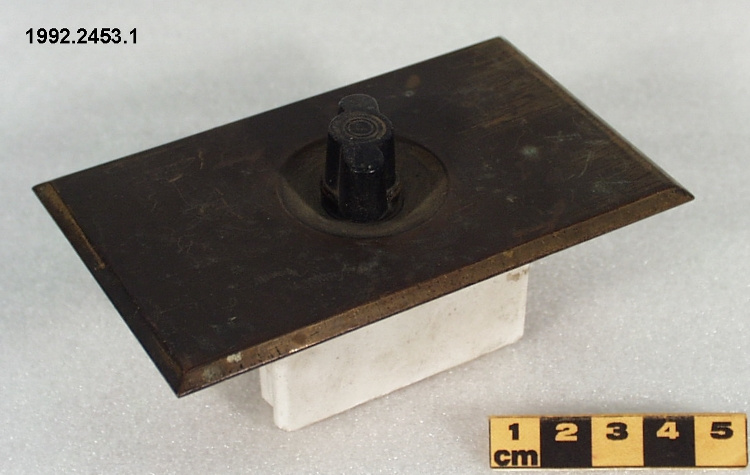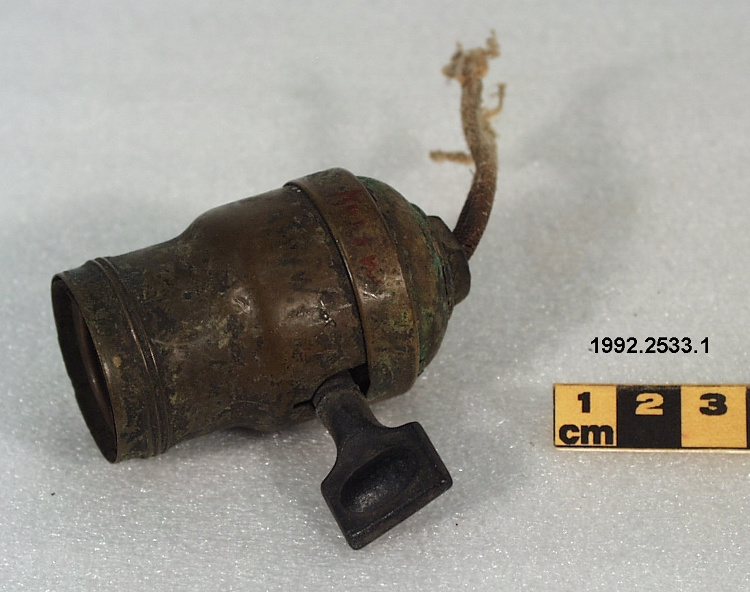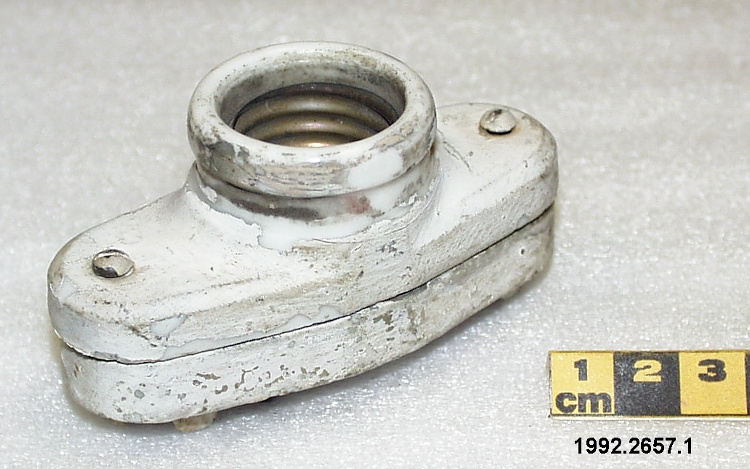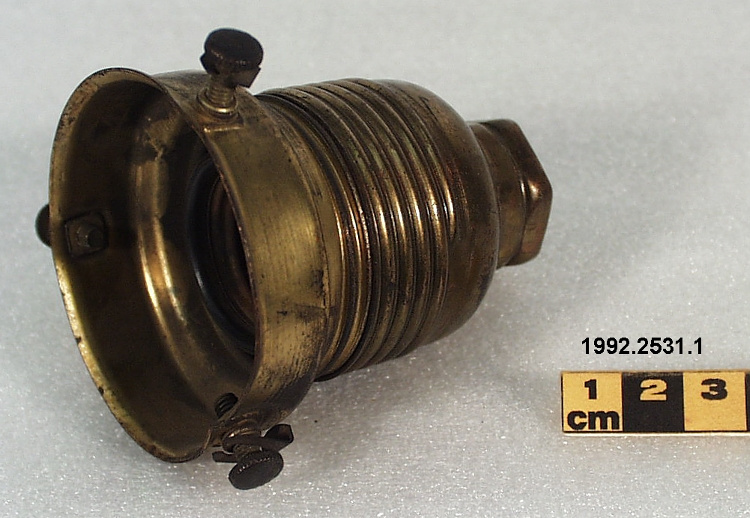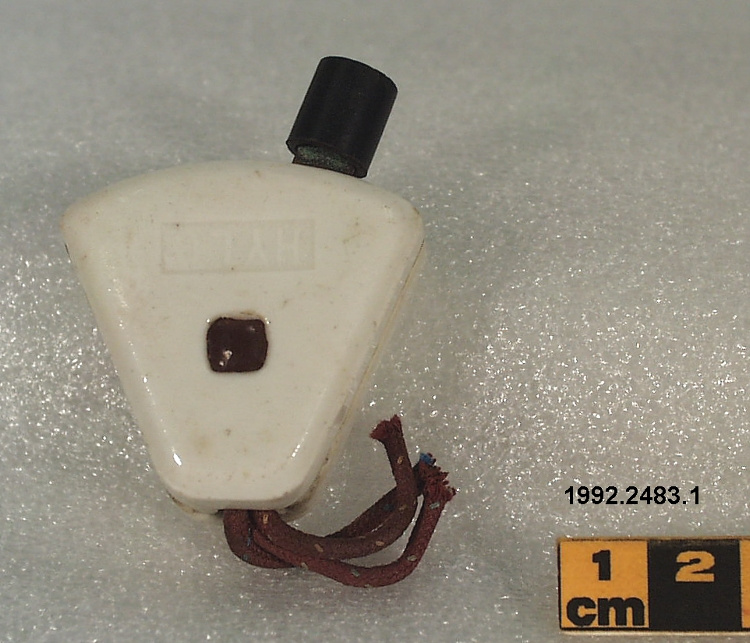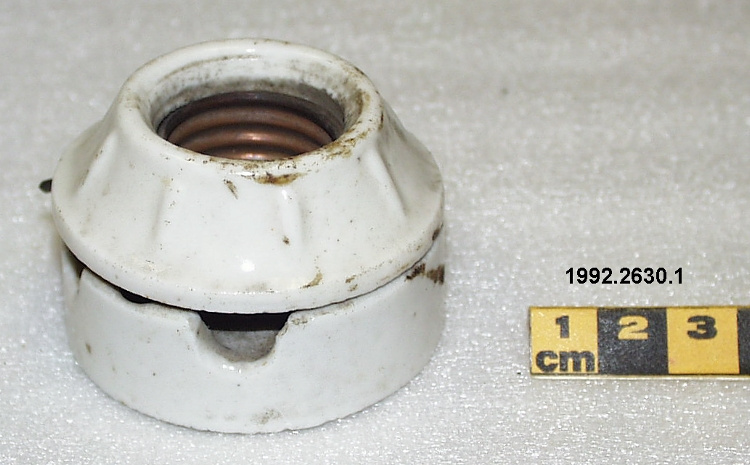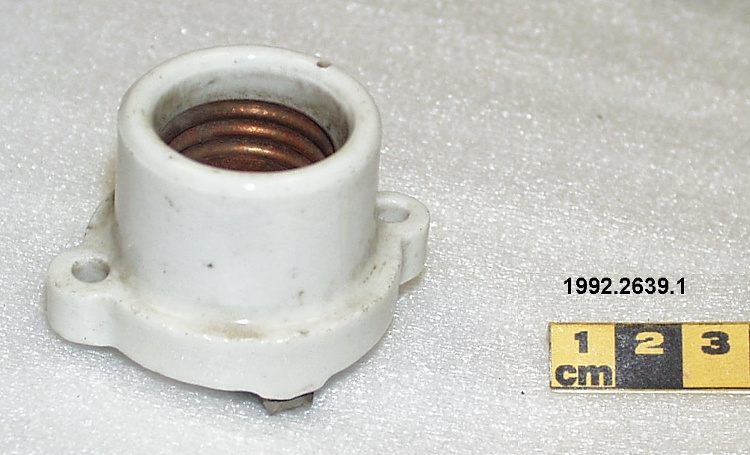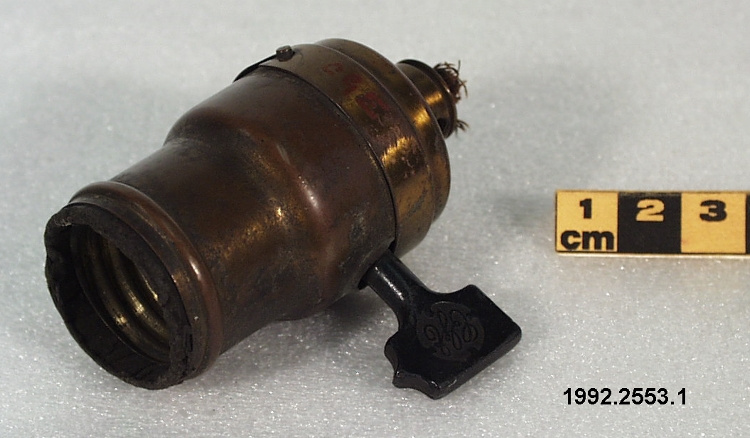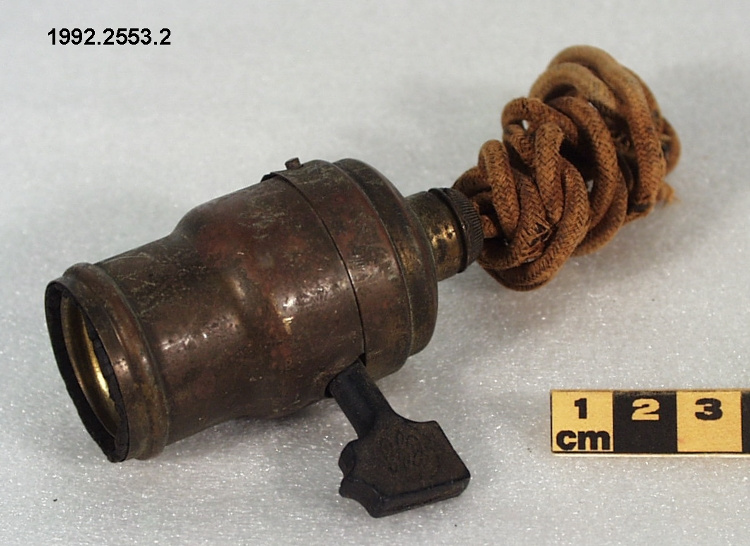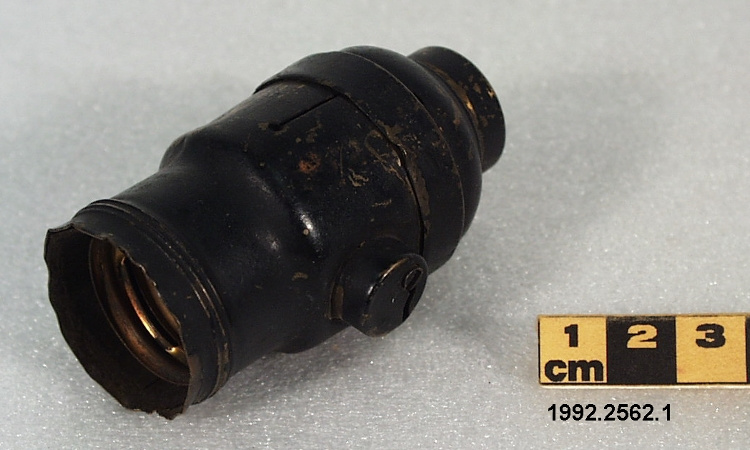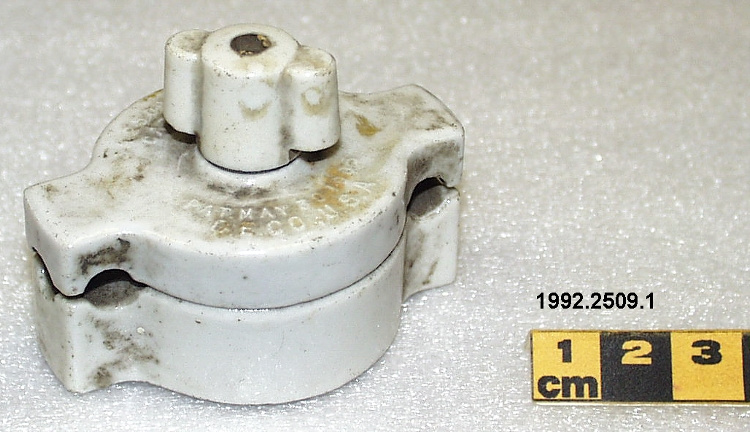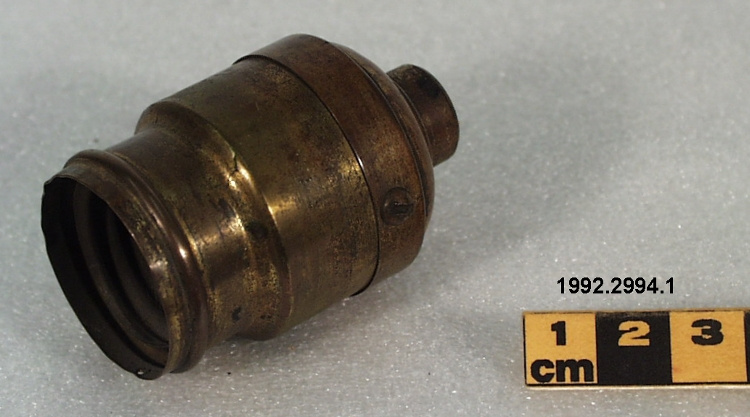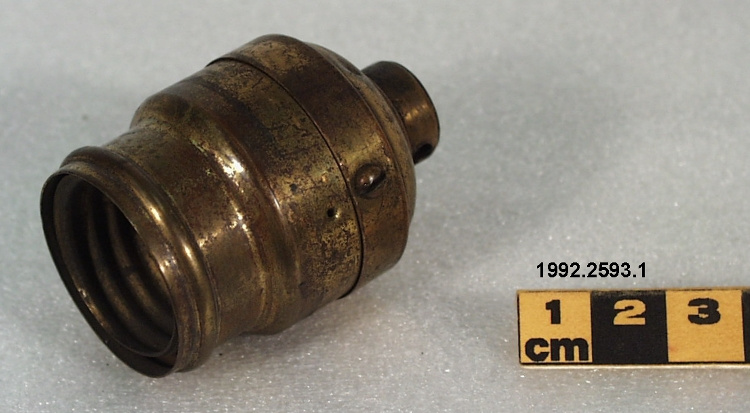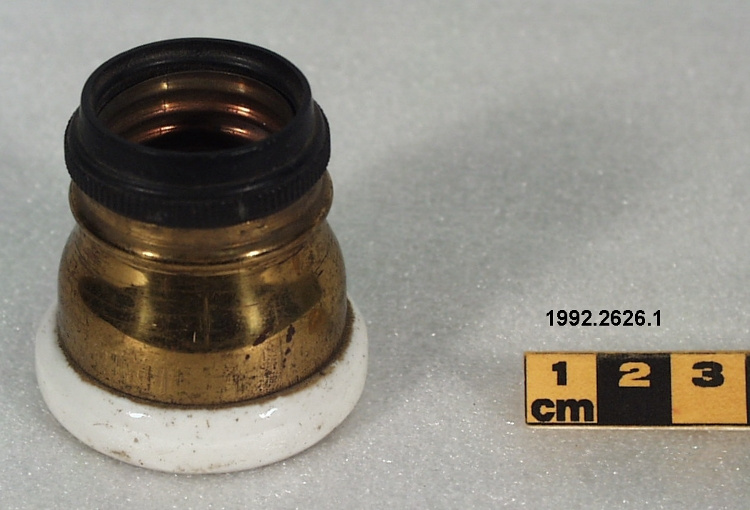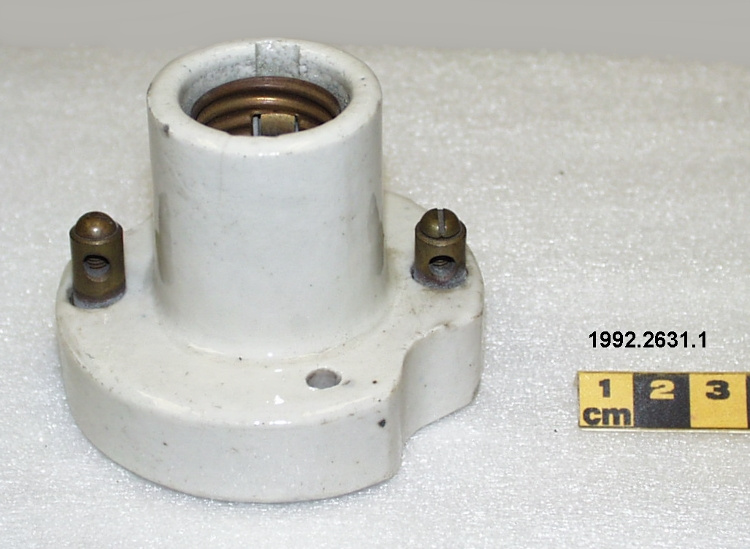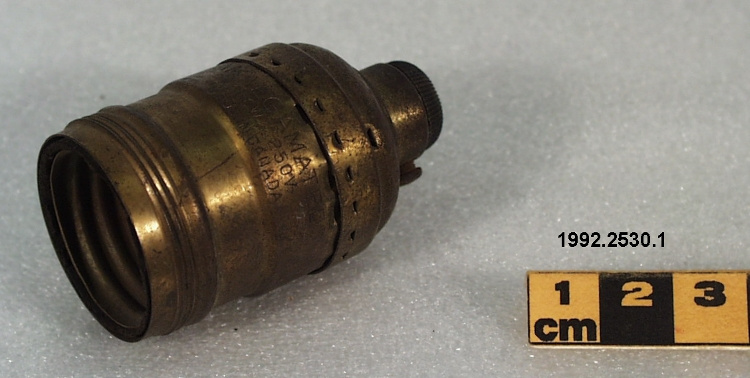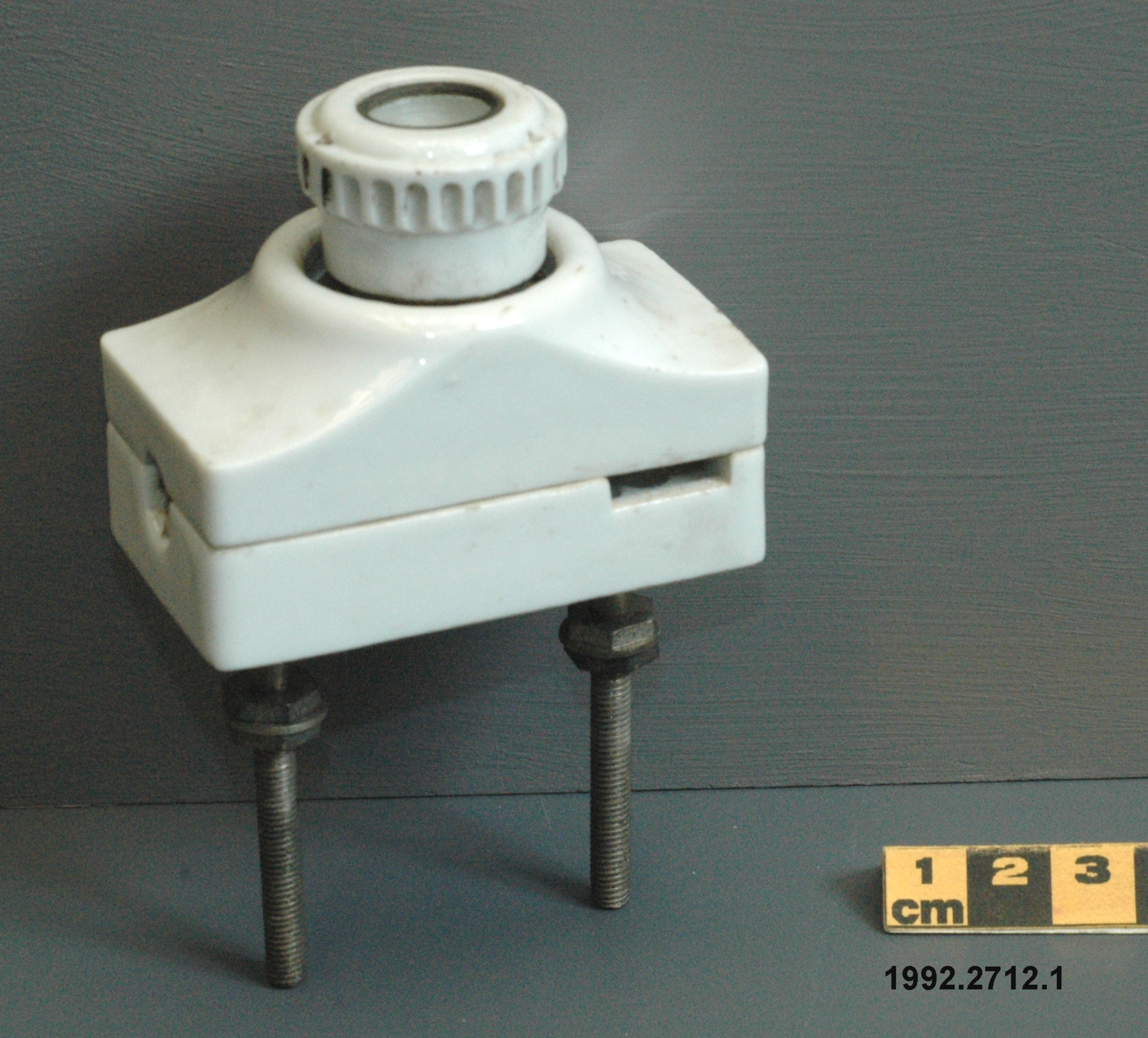Cutout
Use this image
Can I reuse this image without permission? Yes
Object images on the Ingenium Collection’s portal have the following Creative Commons license:
Copyright Ingenium / CC BY-NC-ND (Attribution-NonCommercial 4.0 International (CC BY-NC 4.0)
ATTRIBUTE THIS IMAGE
Ingenium,
1992.2712.001
Permalink:
Ingenium is releasing this image under the Creative Commons licensing framework, and encourages downloading and reuse for non-commercial purposes. Please acknowledge Ingenium and cite the artifact number.
DOWNLOAD IMAGEPURCHASE THIS IMAGE
This image is free for non-commercial use.
For commercial use, please consult our Reproduction Fees and contact us to purchase the image.
- OBJECT TYPE
- fuse/screw/single/4 amp.
- DATE
- 1915–1935
- ARTIFACT NUMBER
- 1992.2712.001
- MANUFACTURER
- Unknown
- MODEL
- Unknown
- LOCATION
- Unknown
More Information
General Information
- Serial #
- N/A
- Part Number
- 1
- Total Parts
- 2
- AKA
- N/A
- Patents
- N/A
- General Description
- porcelain shell/ brass/ glass/ metal parts/ wax
Dimensions
Note: These reflect the general size for storage and are not necessarily representative of the object's true dimensions.
- Length
- 6.8 cm
- Width
- 4.0 cm
- Height
- 9.1 cm
- Thickness
- N/A
- Weight
- N/A
- Diameter
- N/A
- Volume
- N/A
Lexicon
- Group
- Energy-electric
- Category
- User site
- Sub-Category
- N/A
Manufacturer
- AKA
- Unknown
- Country
- Unknown
- State/Province
- Unknown
- City
- Unknown
Context
- Country
- Canada
- State/Province
- Unknown
- Period
- 1910s-1930s
- Canada
-
An example of a fuse cutout of a type used in Canada. Part of a large and varied collection of over 7500 electrical items acquired and documented by Ontario Hydro in the1960s. The collection was thought to be the largest and most comprehensive of its kind in Canada and was donated to the National Museum of Science and Technology in 1992. - Function
-
An electrical device which interrupts the flow of electrical current through a piece of apparatus or equipment. - Technical
-
An example of a fuse cutout. In the period 1880 to 1889 Edison invented a device to protect wiring from over-heating. In 1880 he patented the use of a fuse. The early fuse block was first made of wood with brass fittings. Lamps were individually fused until the early 1900s. In the period 1890-1899, fusing was often done using fuse wire in an open porcelain cutout with a cover of sheet mica or porcelain. These cutouts were made of porcelain as were the fuse plugs. These links consisted of lengths of fuse wire with copper terminals at each end. In the latter part of this period, the cartridge fuse was introduced. It was most common in industrial settings but was the only type that could be used when the current was more than 30 amps (Ref. 2). - Area Notes
-
Unknown
Details
- Markings
- none
- Missing
- appears complete
- Finish
- glazed white porcelain/ metallic parts
- Decoration
- N/A
CITE THIS OBJECT
If you choose to share our information about this collection object, please cite:
Unknown Manufacturer, Cutout, between 1915–1935, Artifact no. 1992.2712, Ingenium – Canada’s Museums of Science and Innovation, http://collection.ingeniumcanada.org/en/item/1992.2712.001/
FEEDBACK
Submit a question or comment about this artifact.
More Like This
